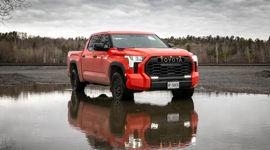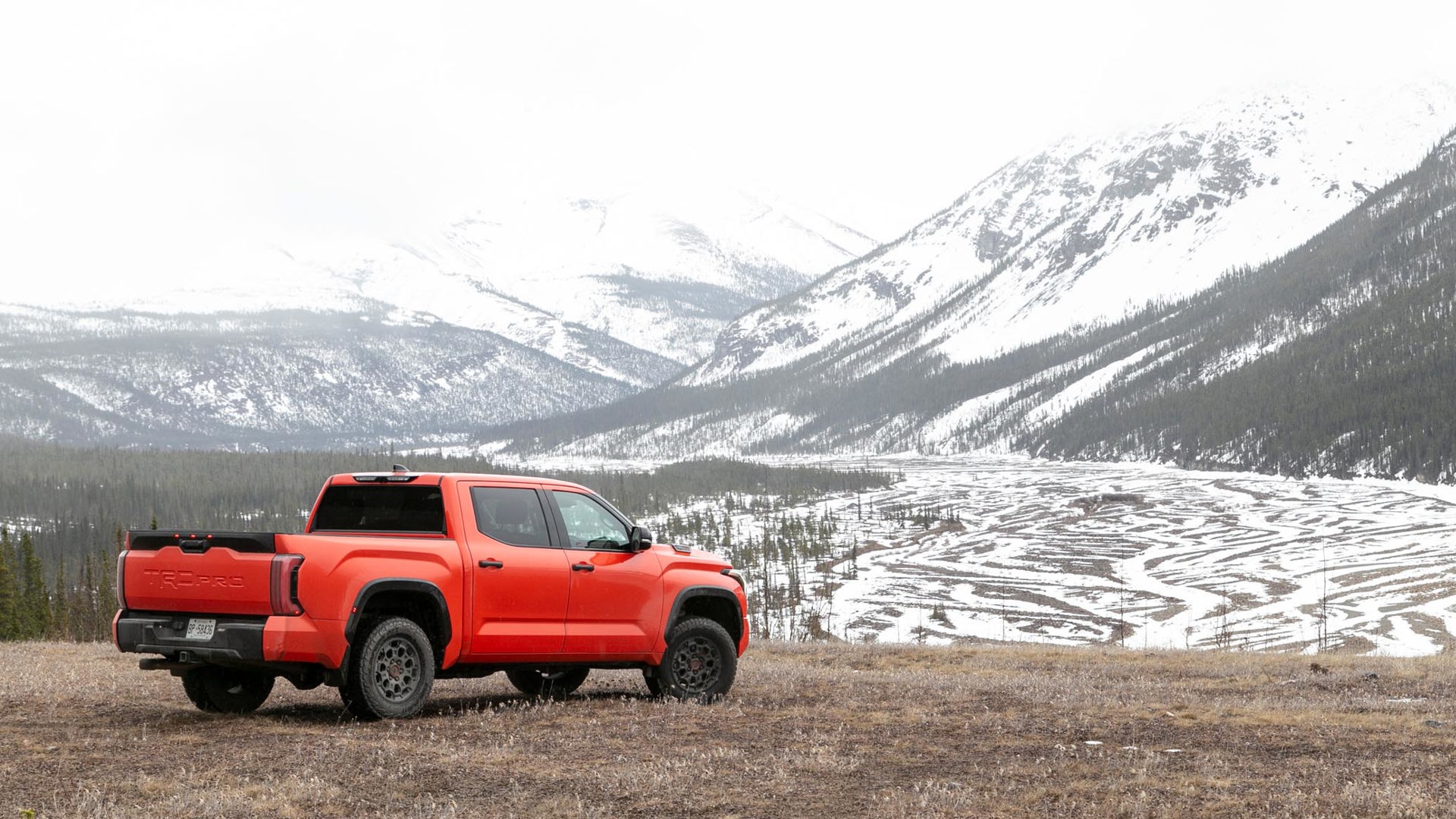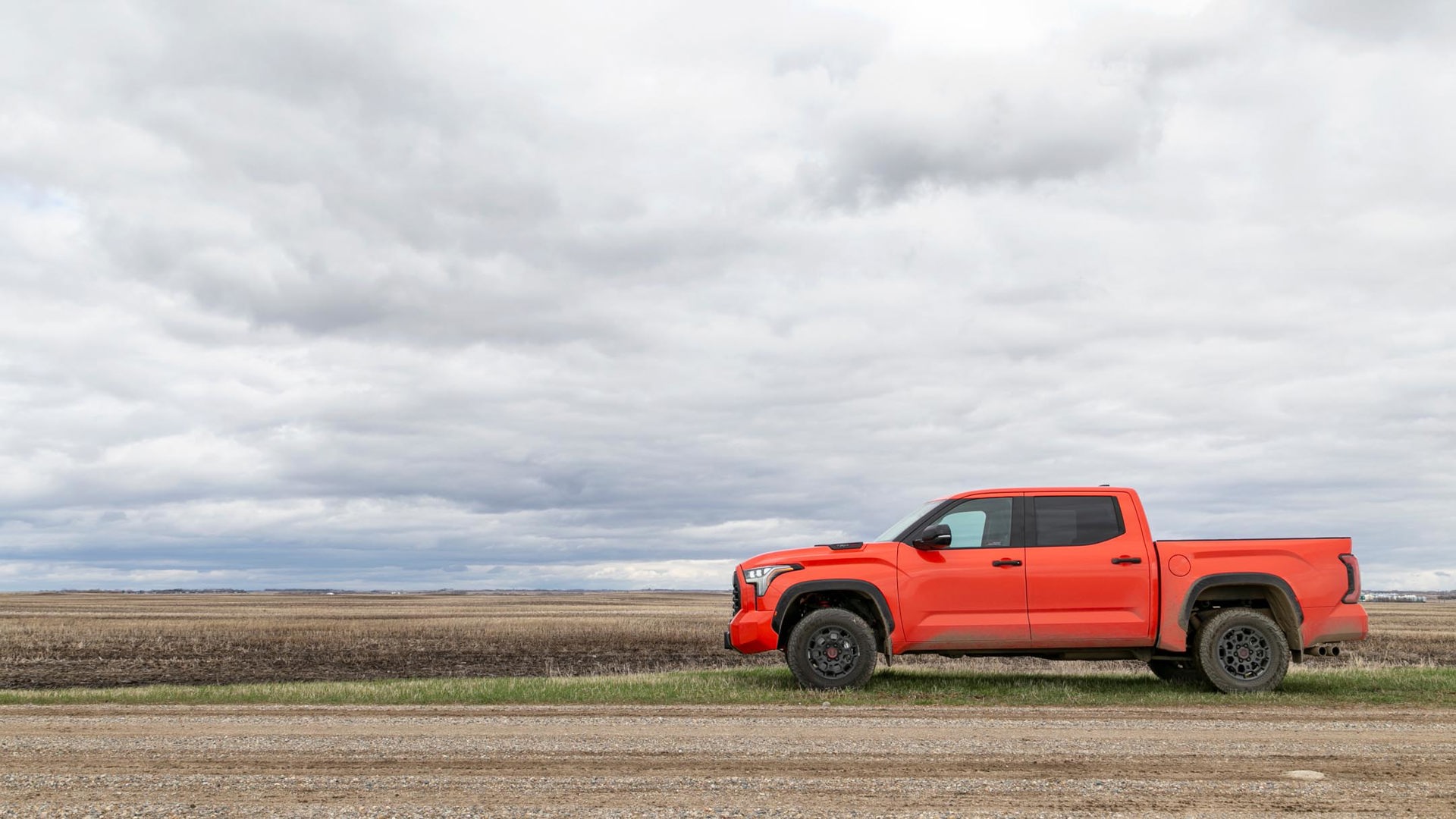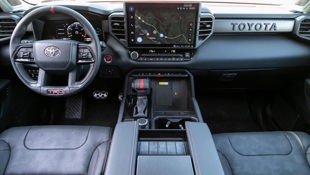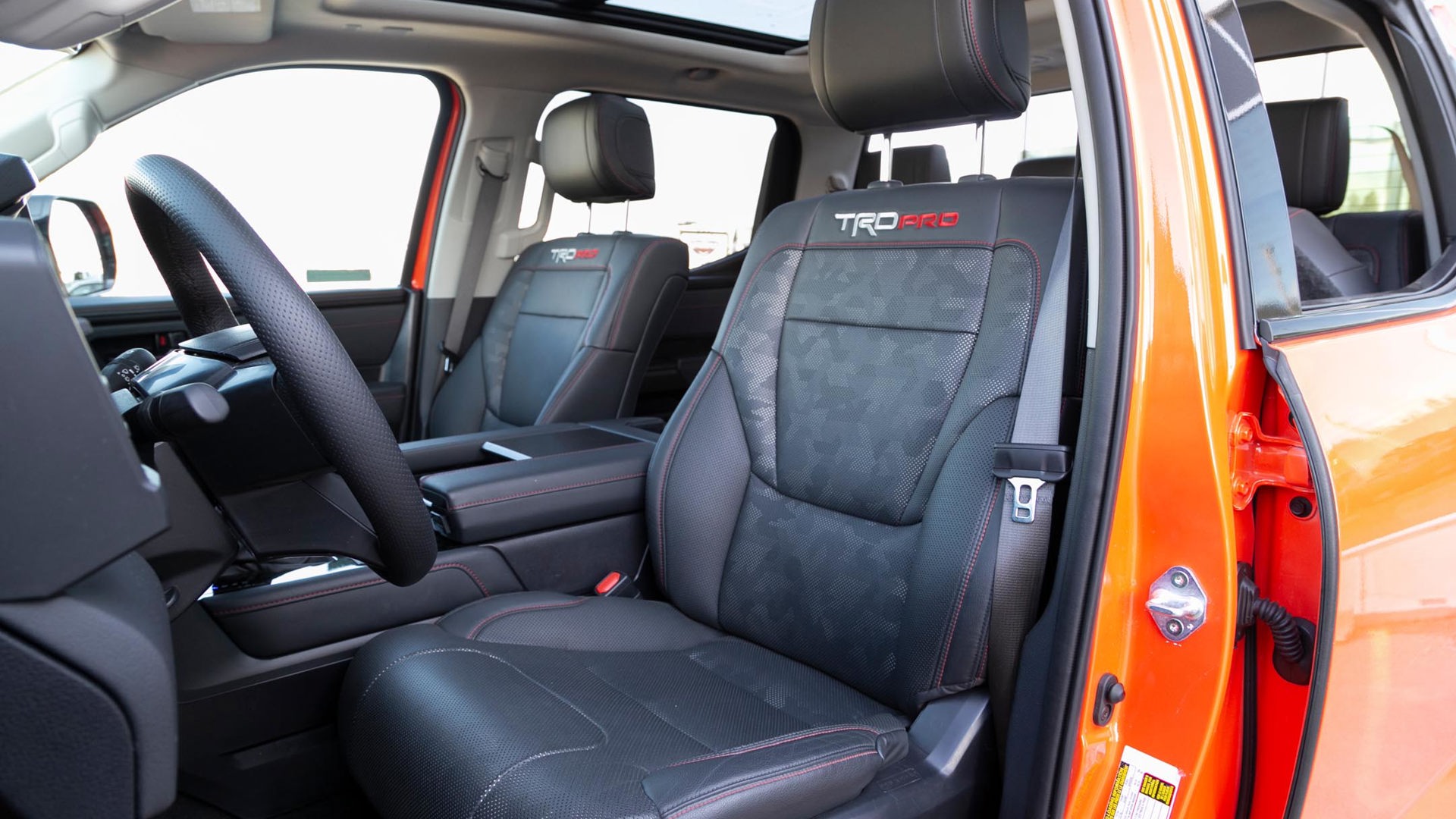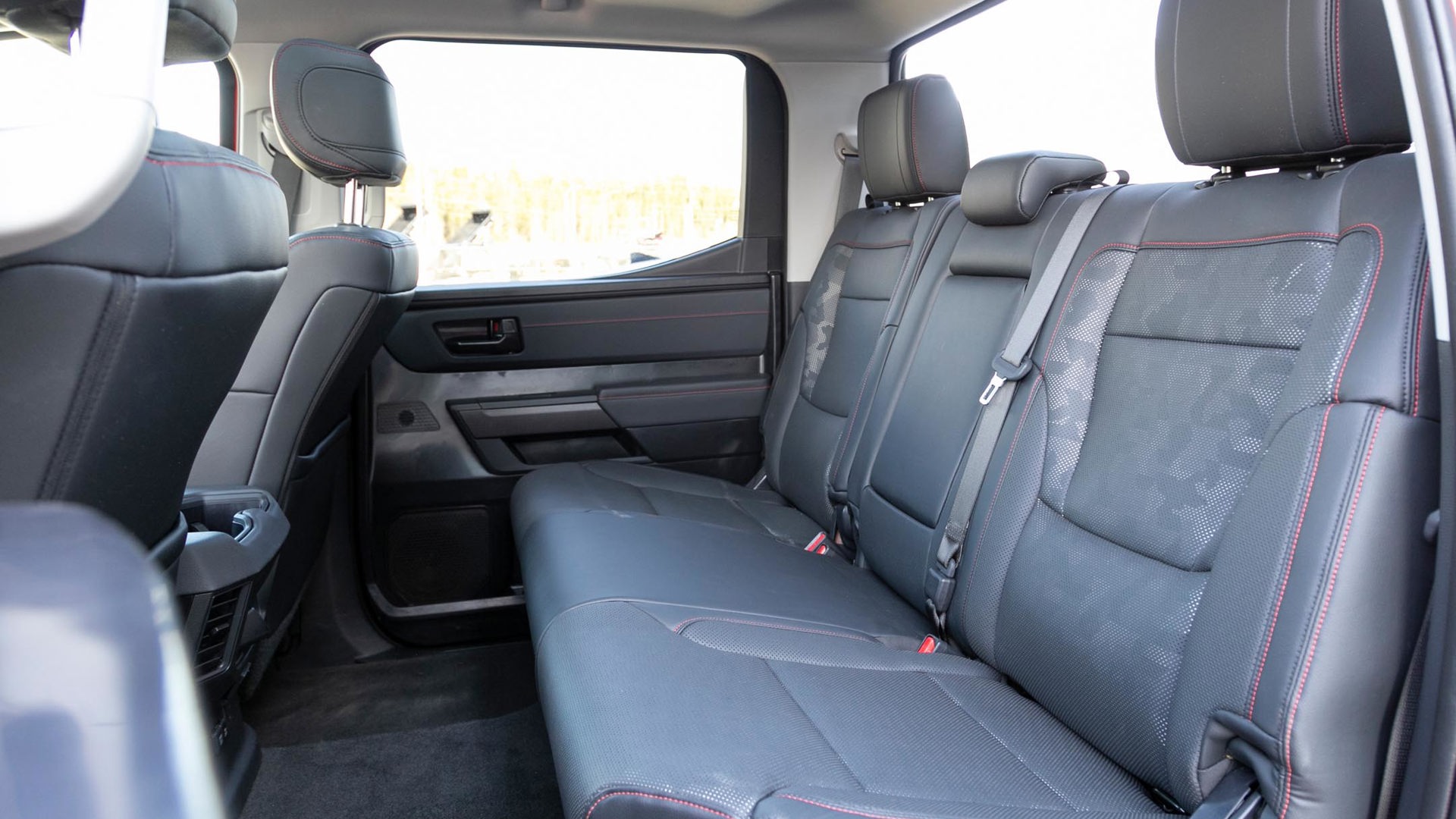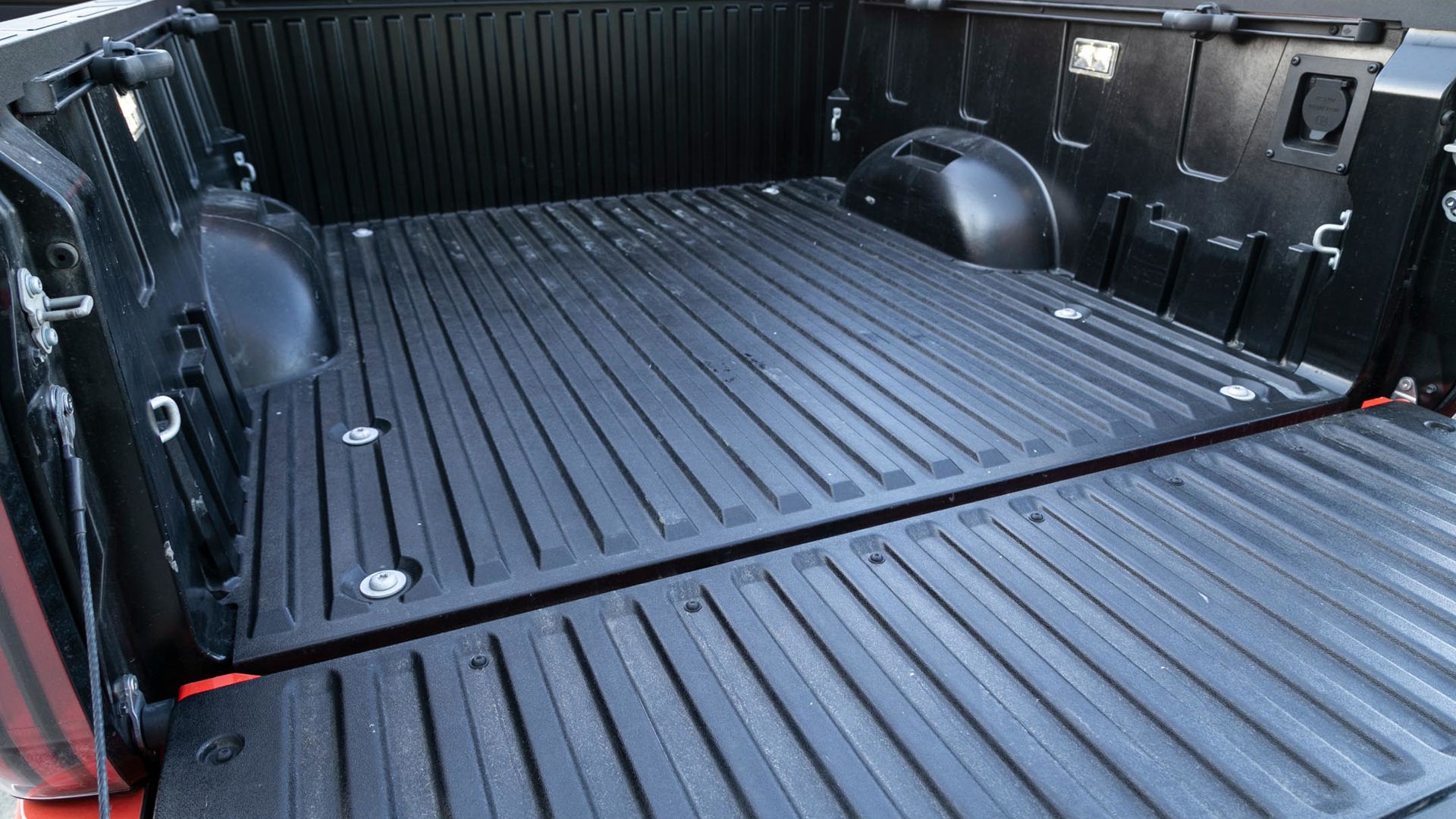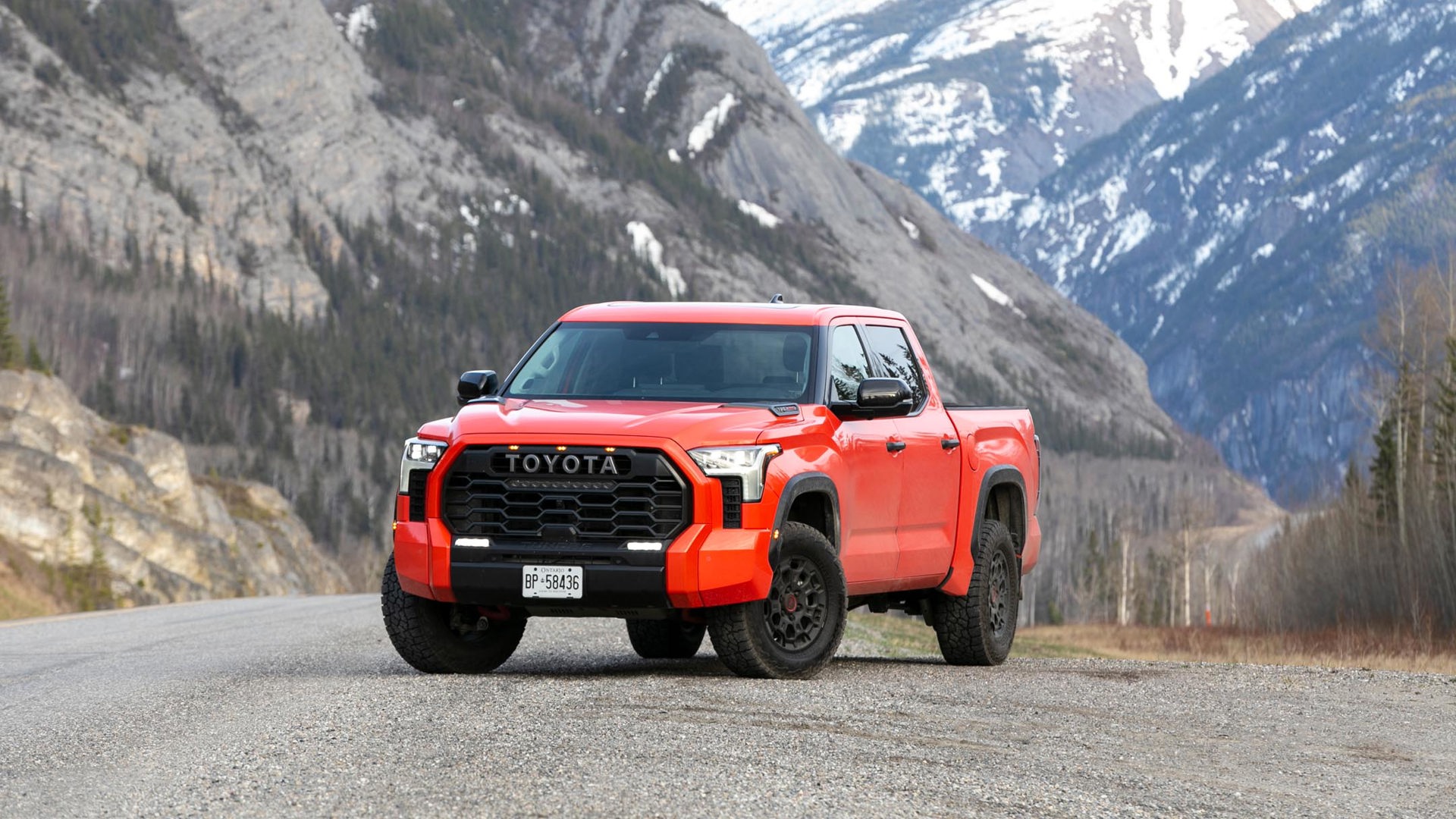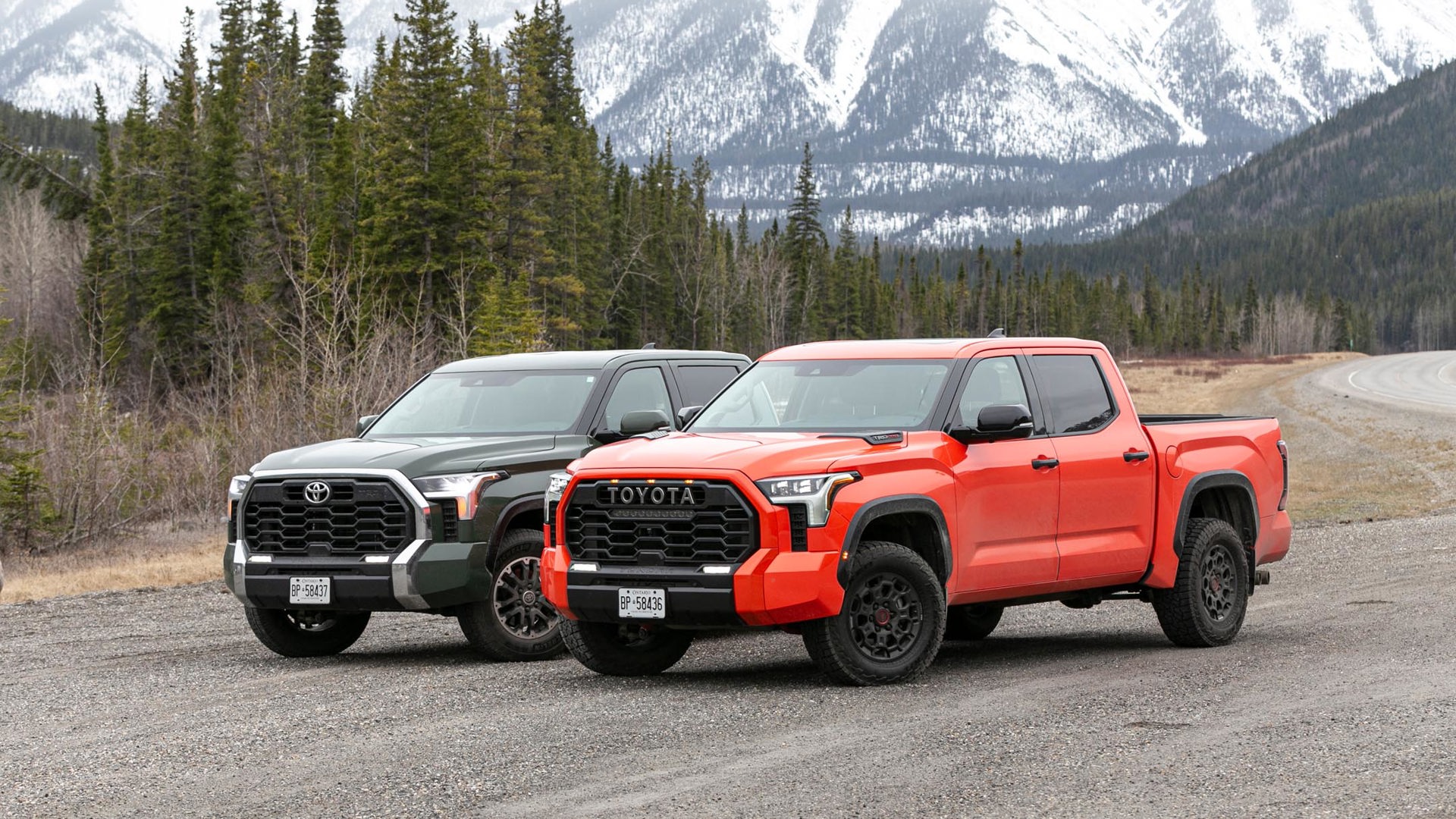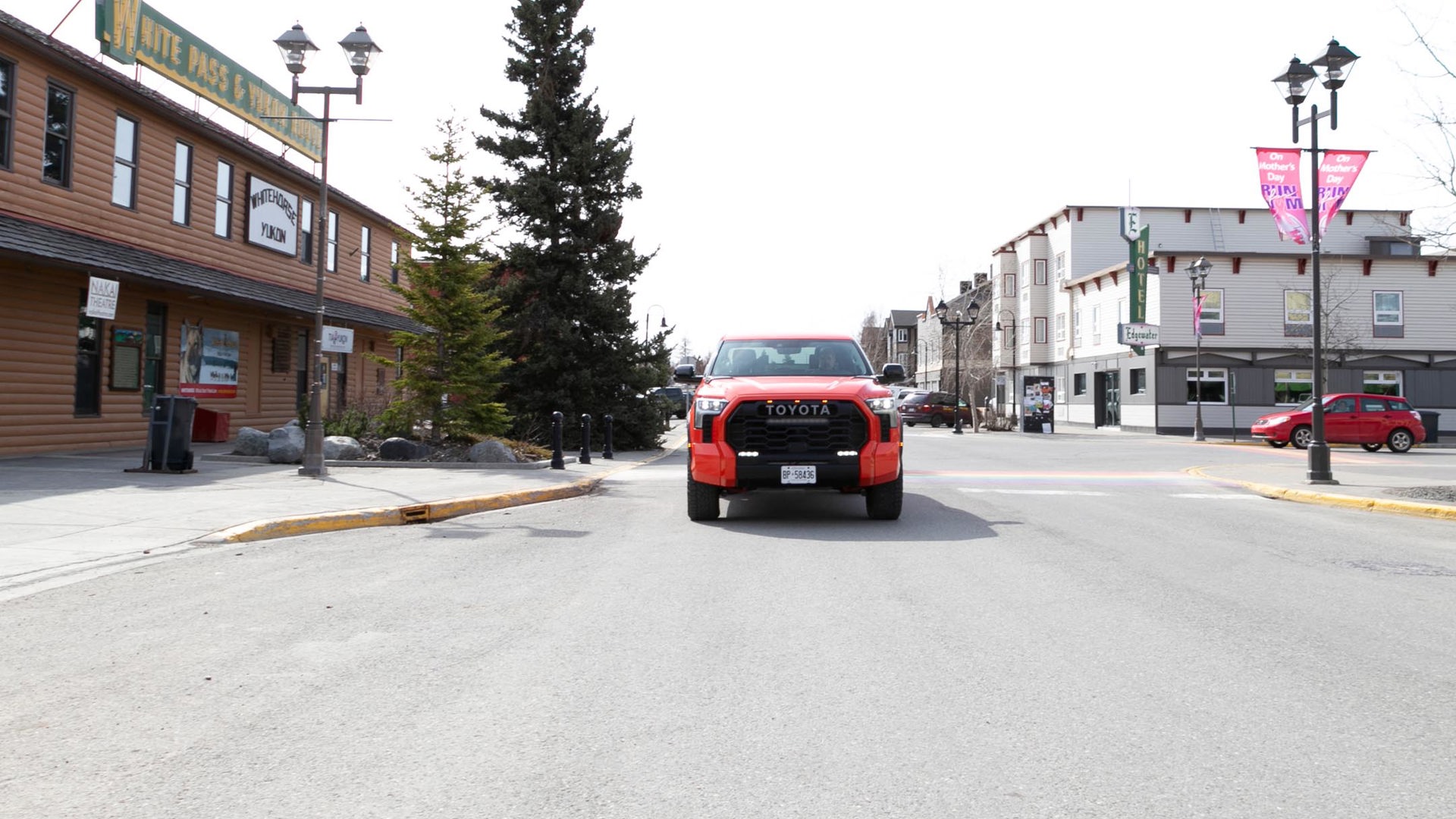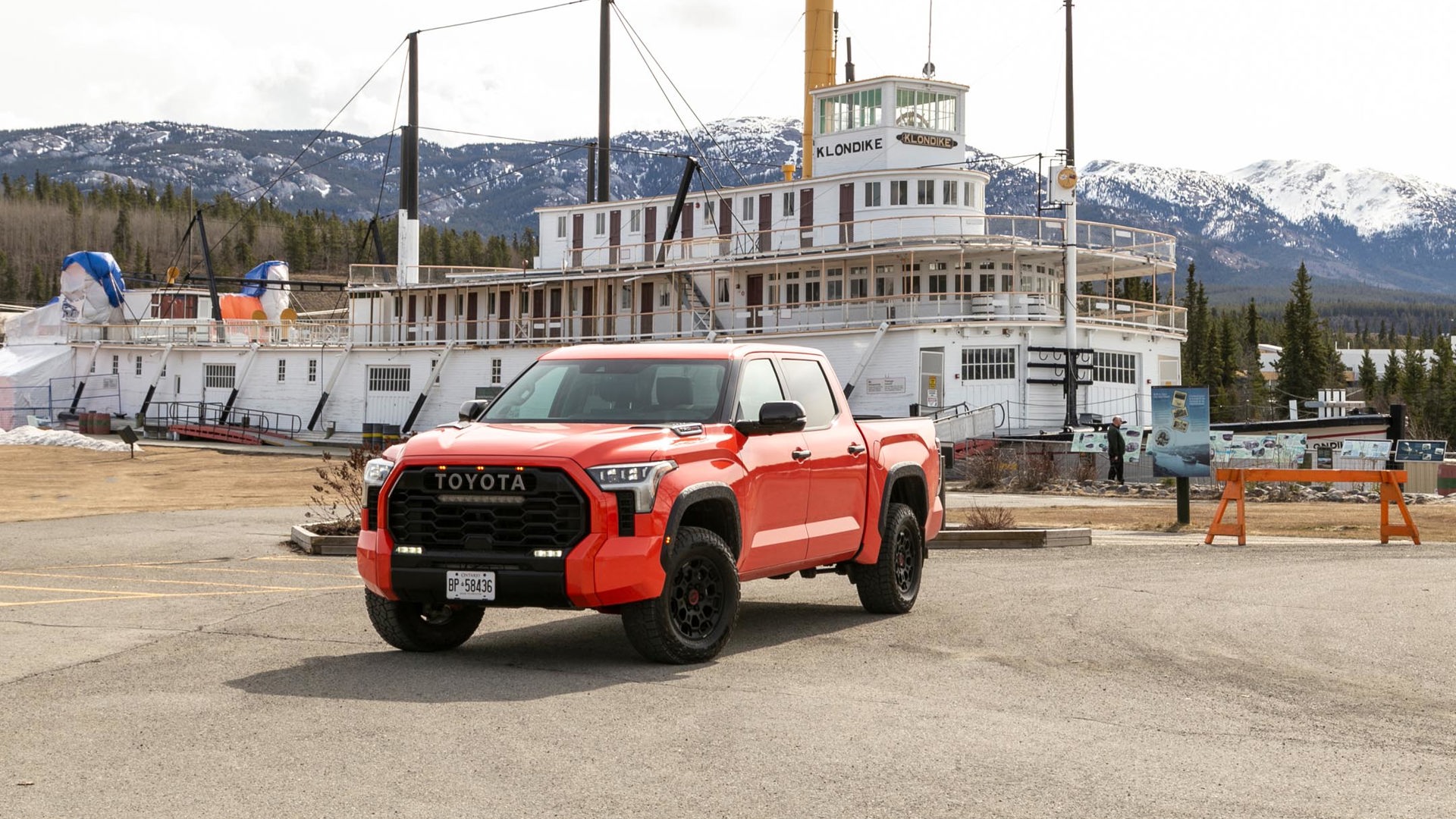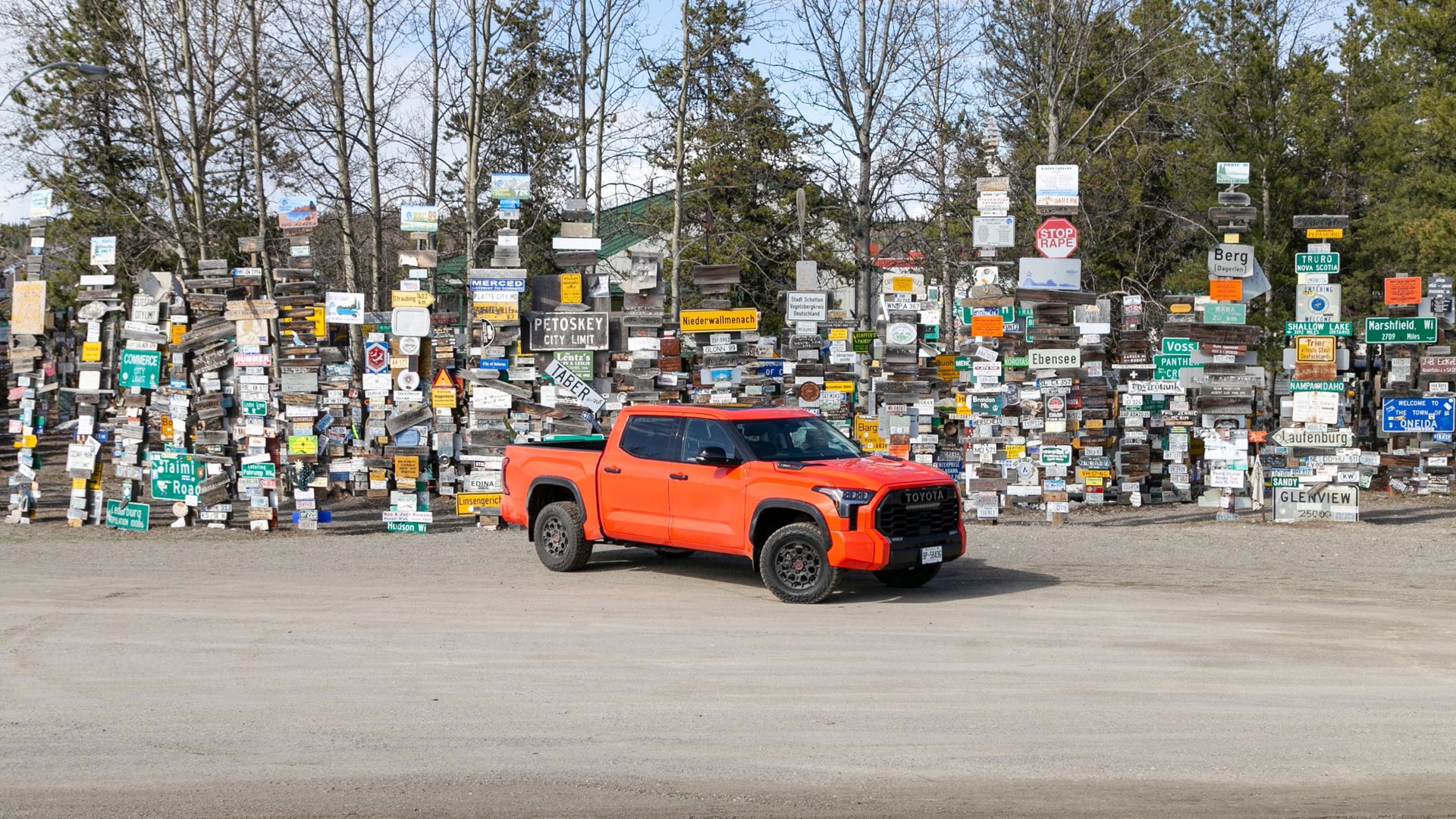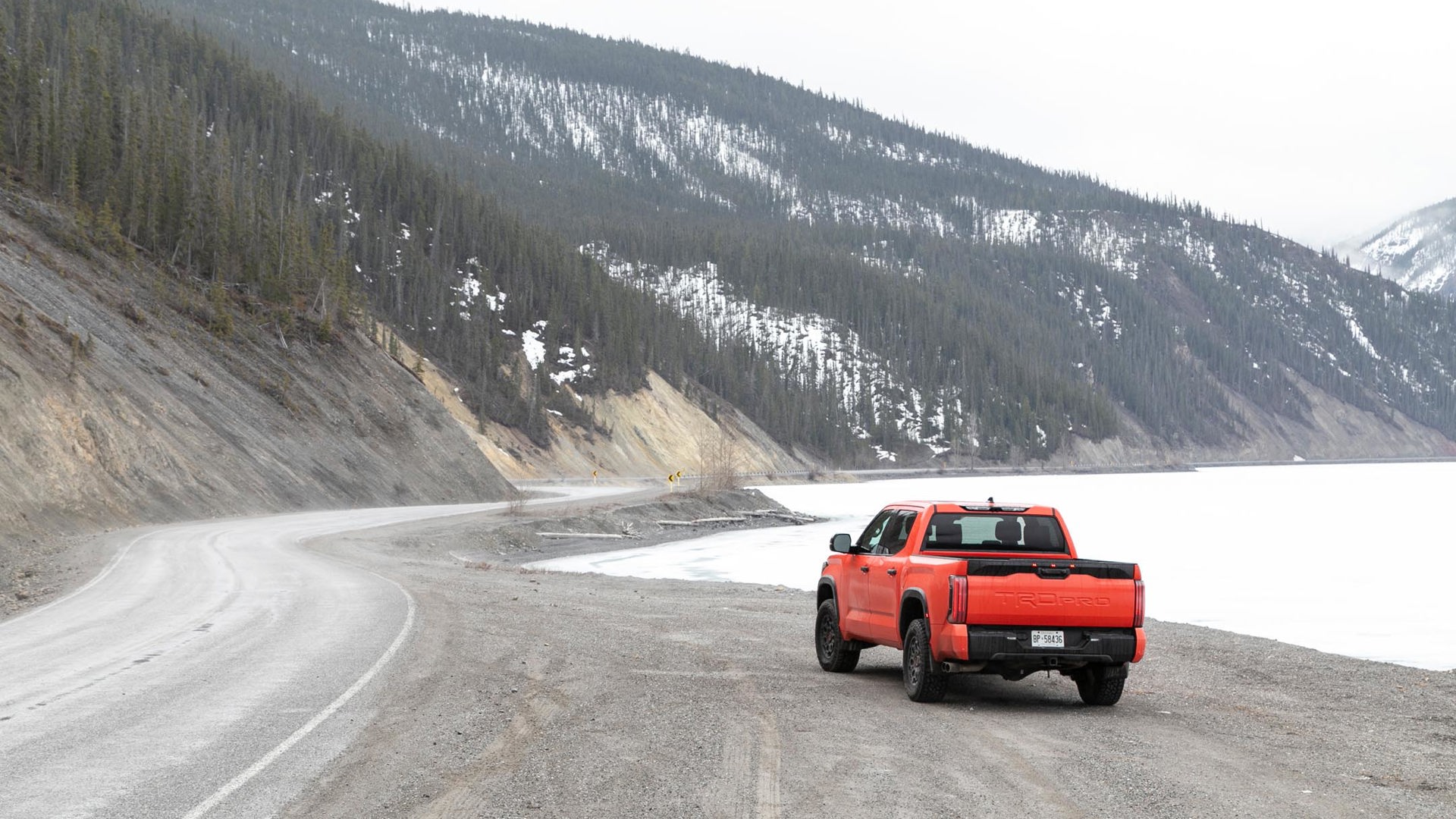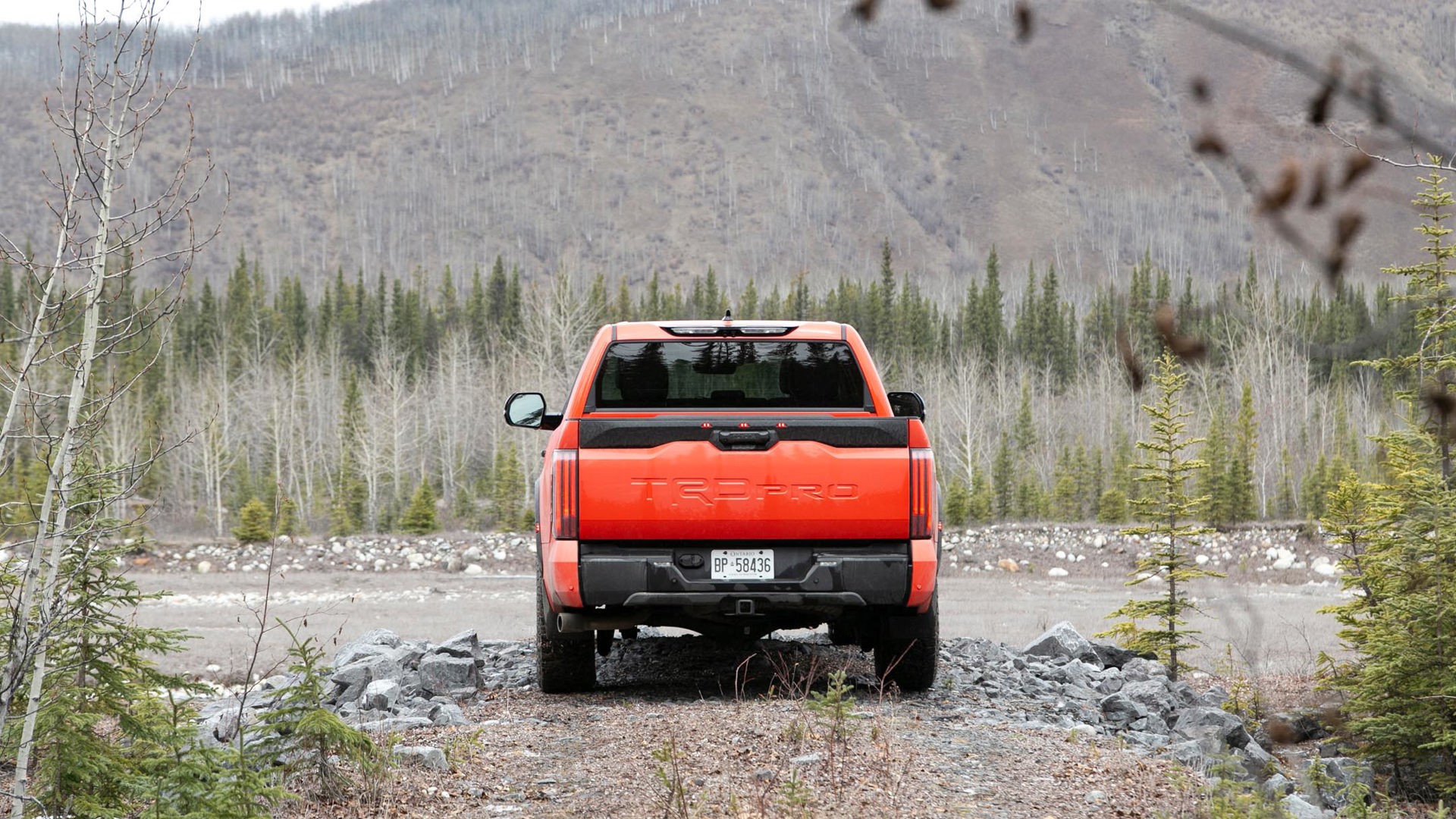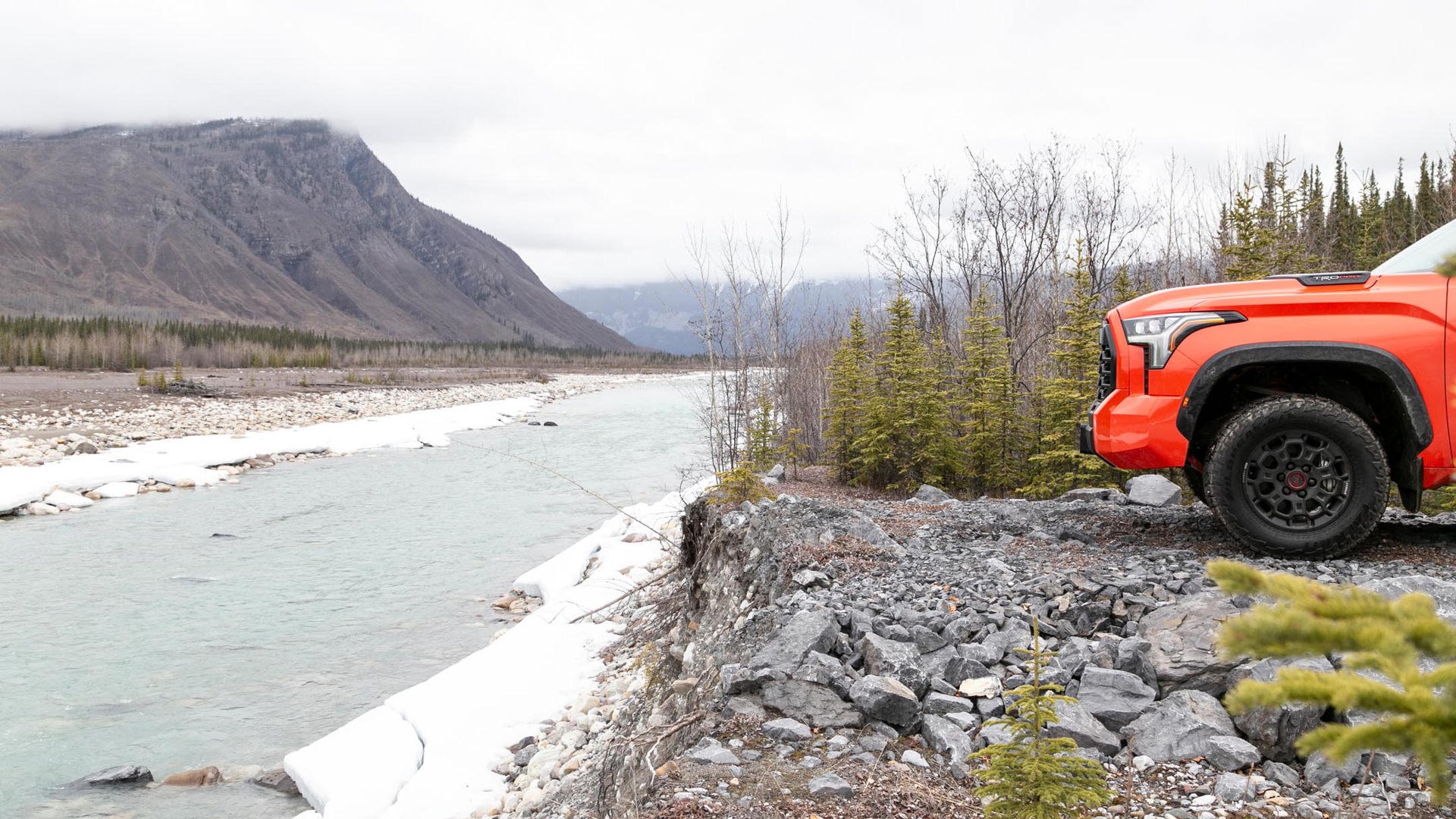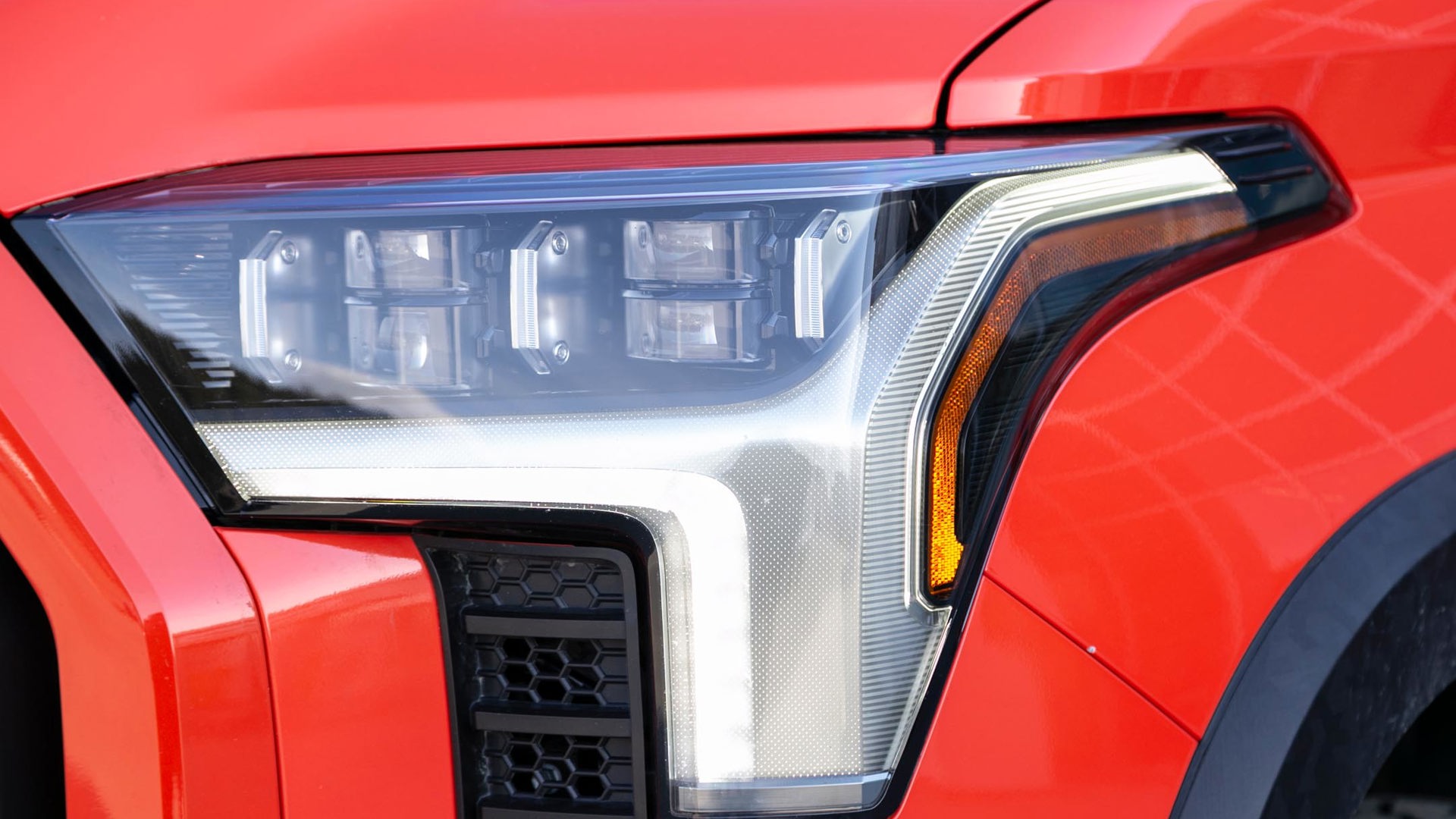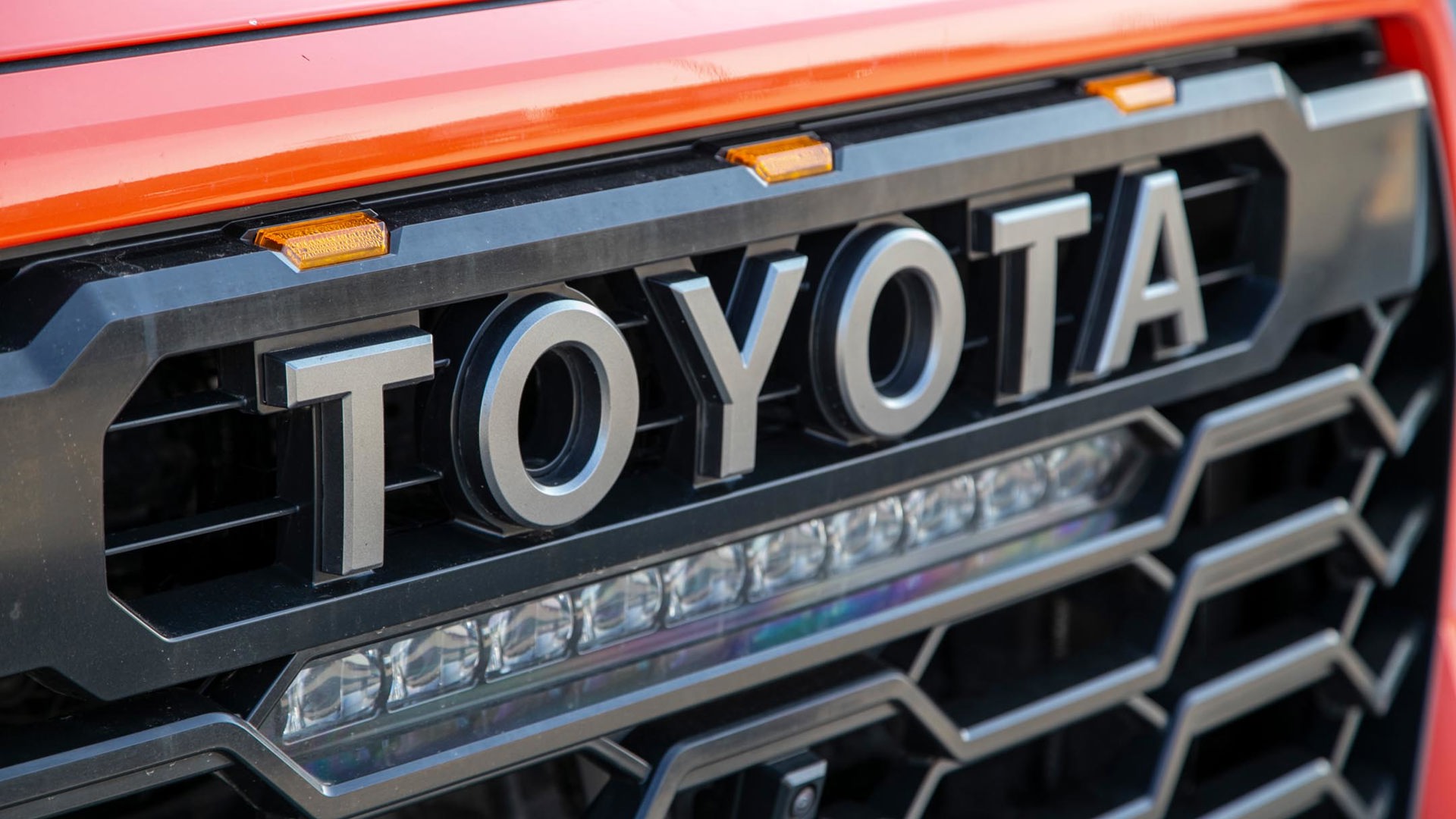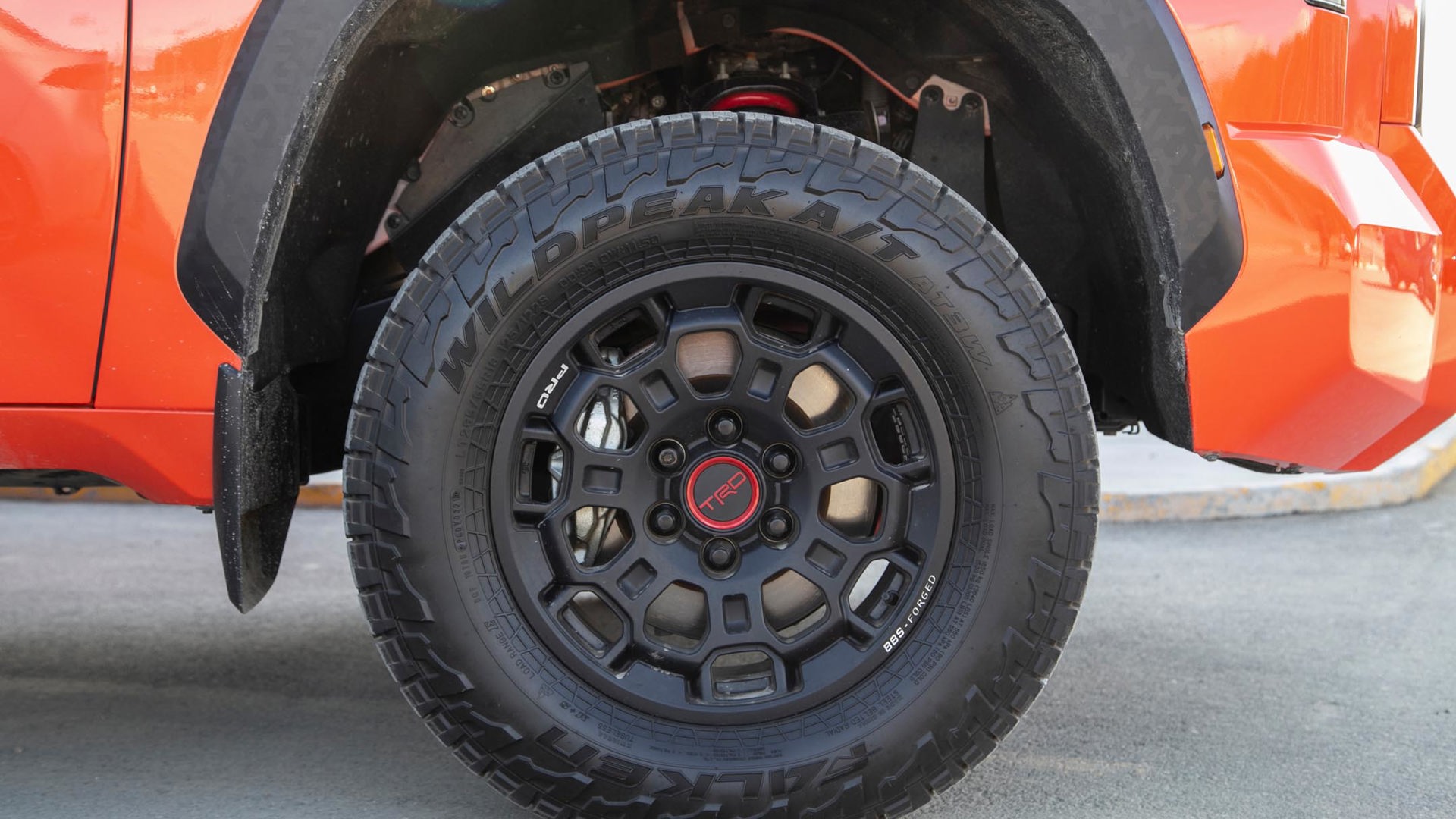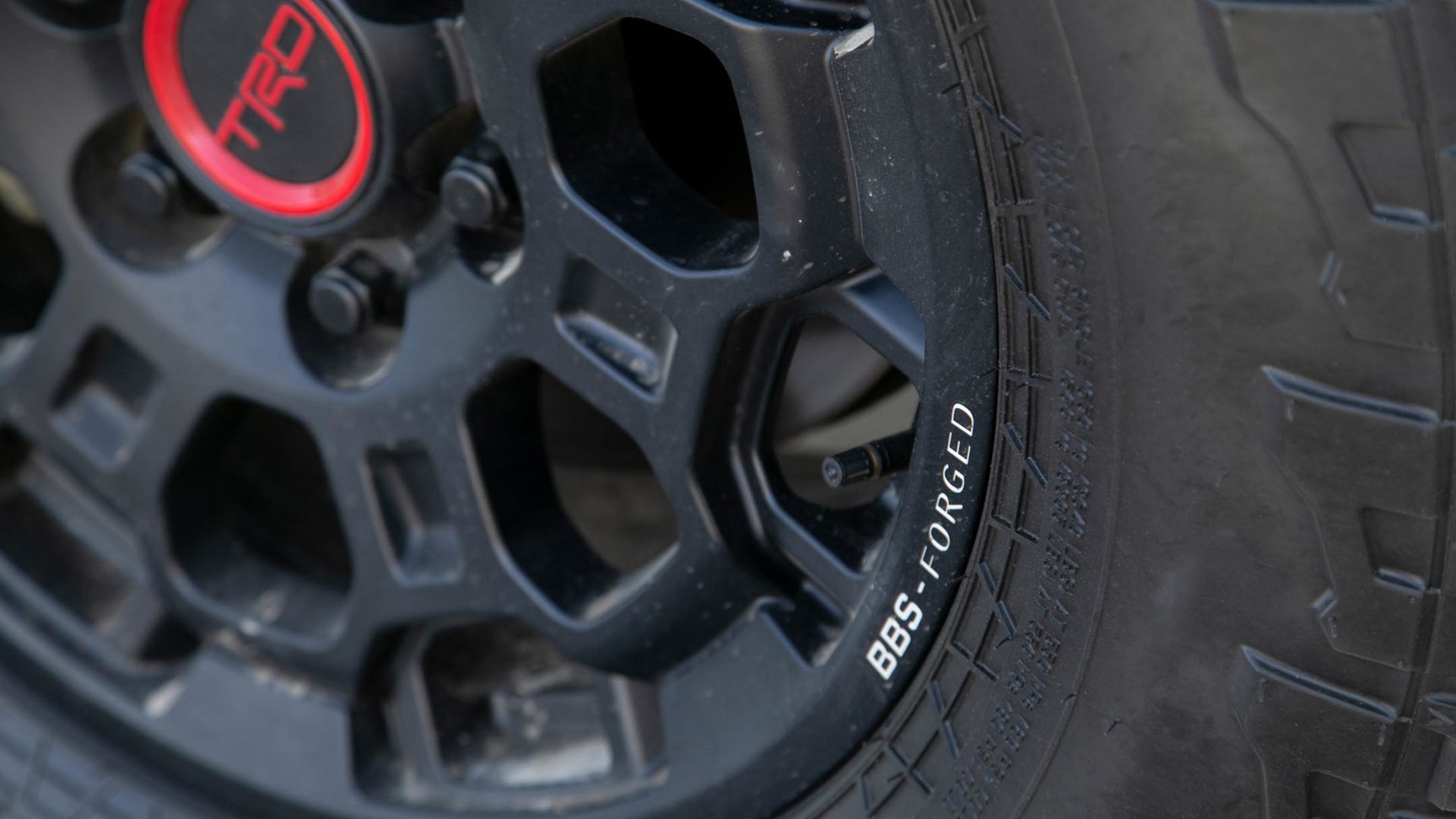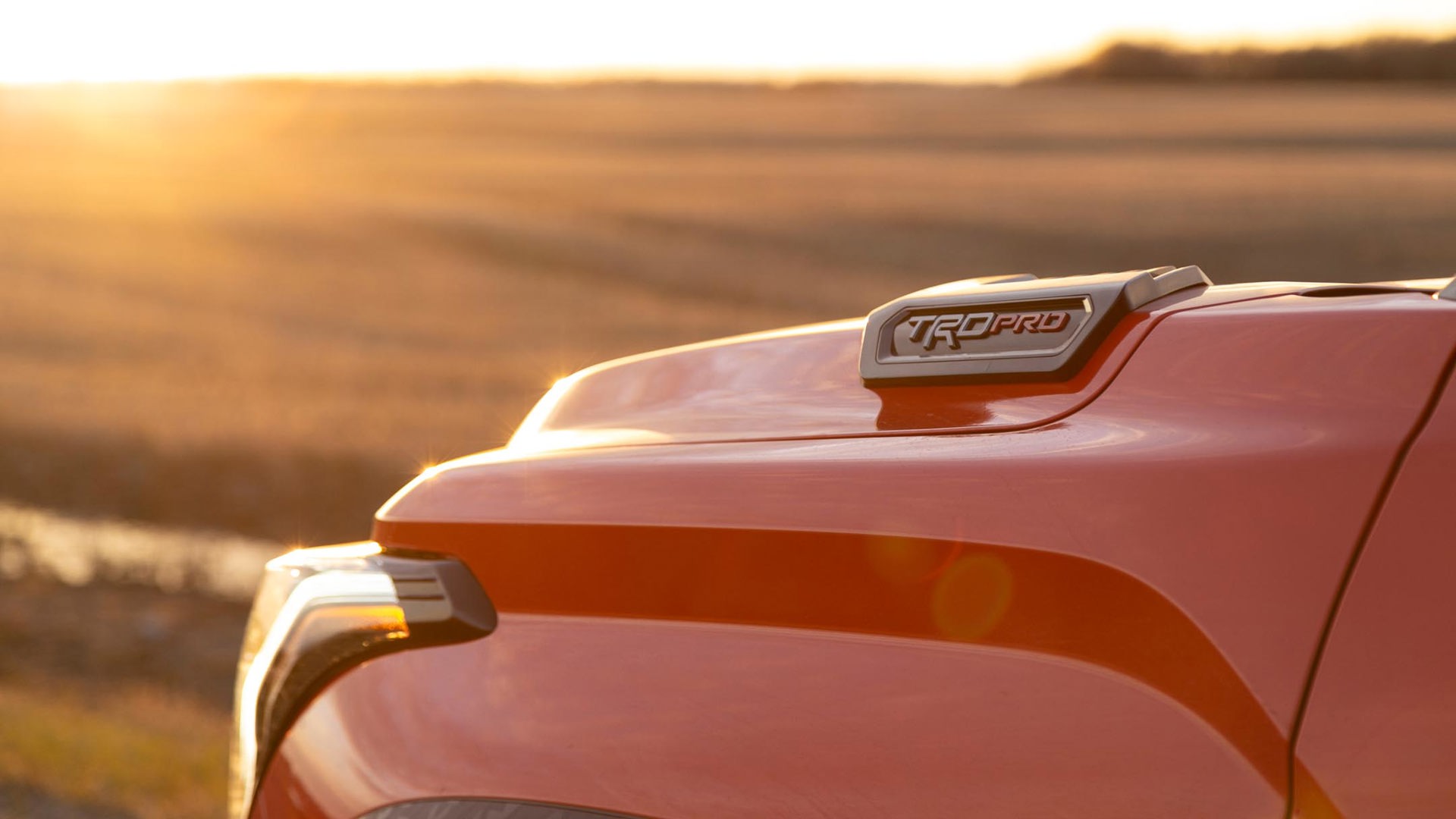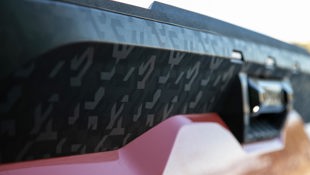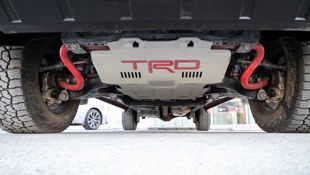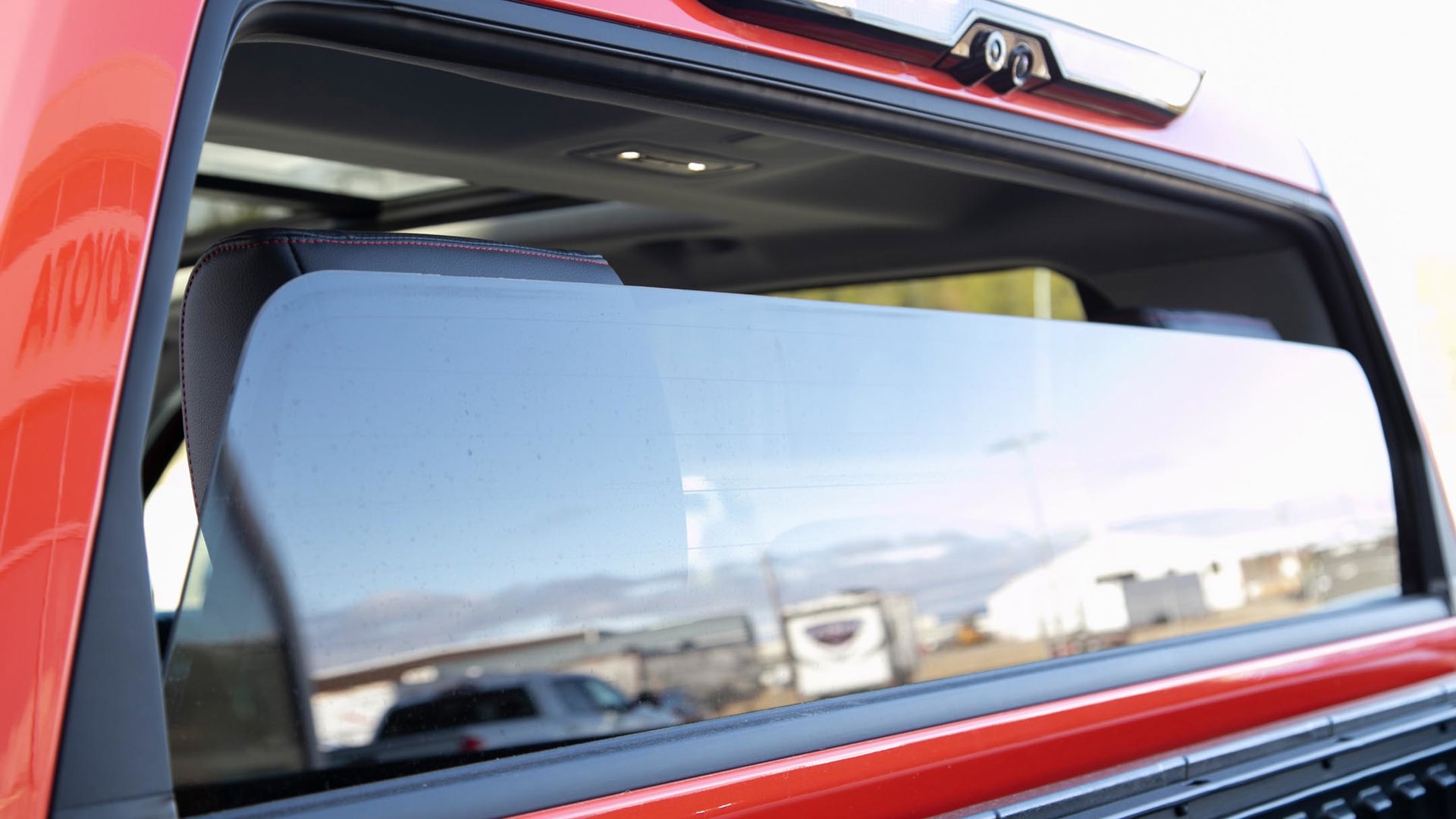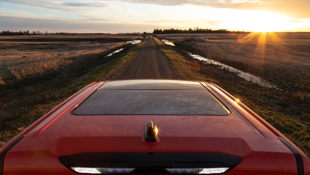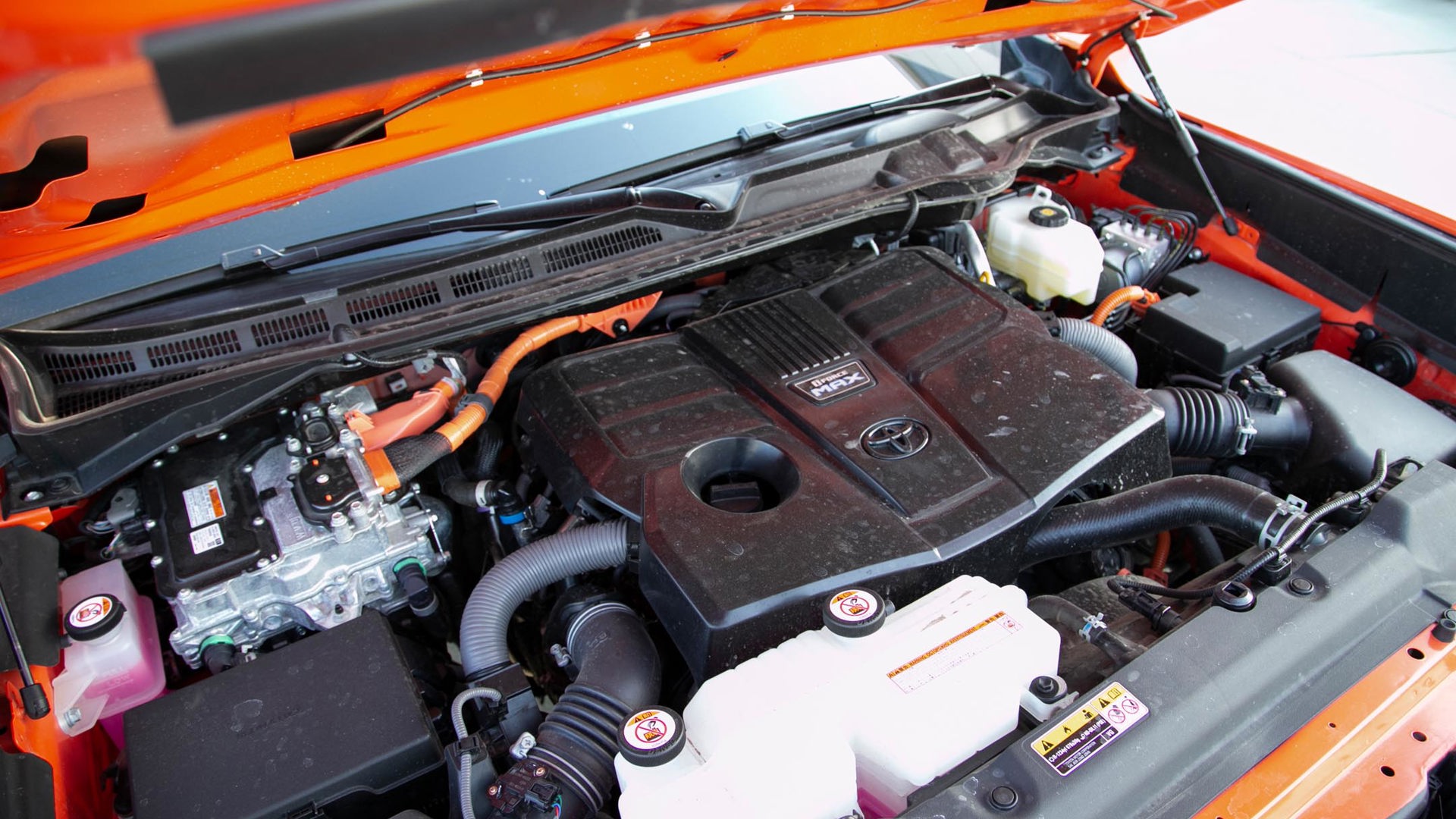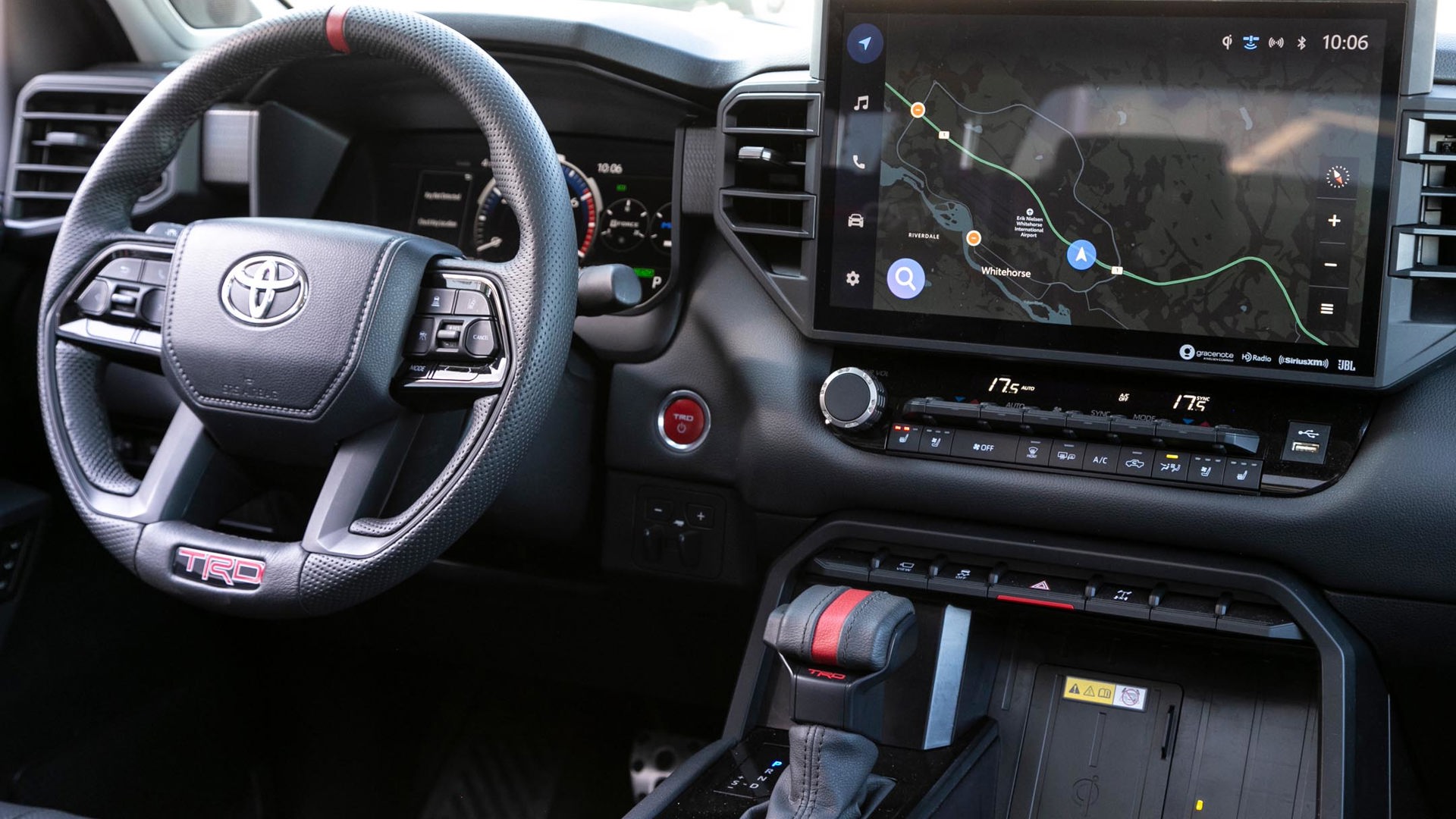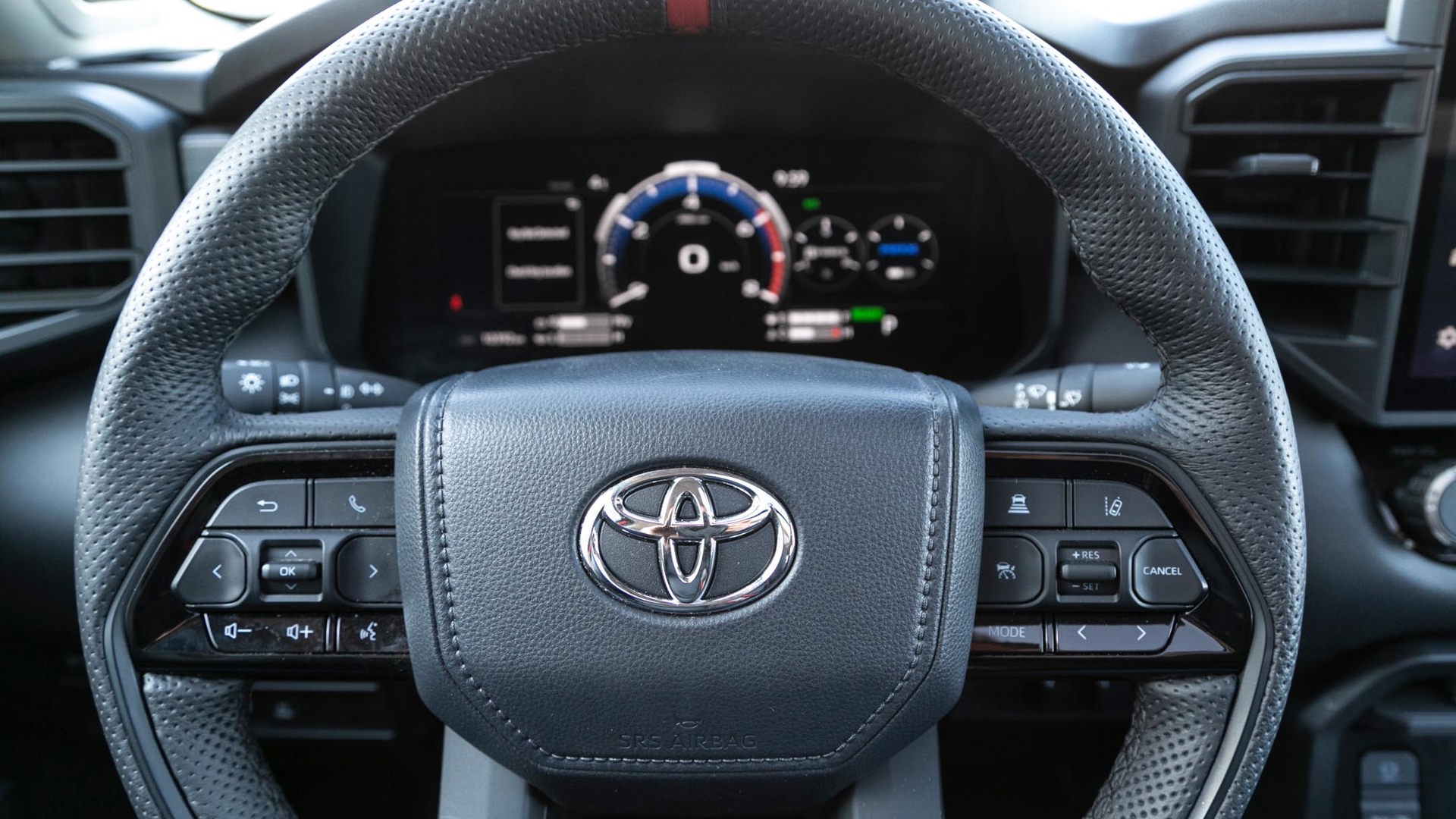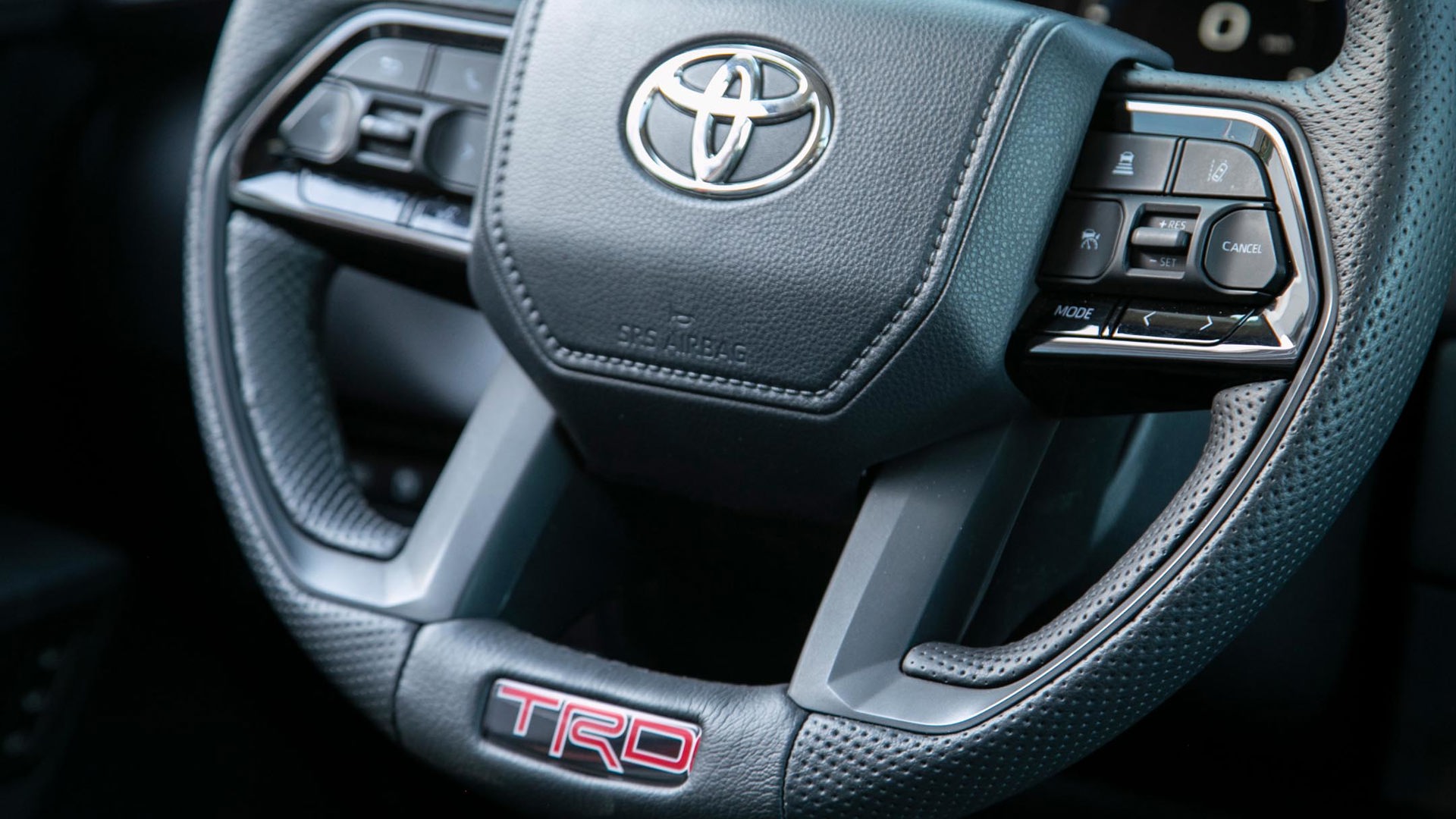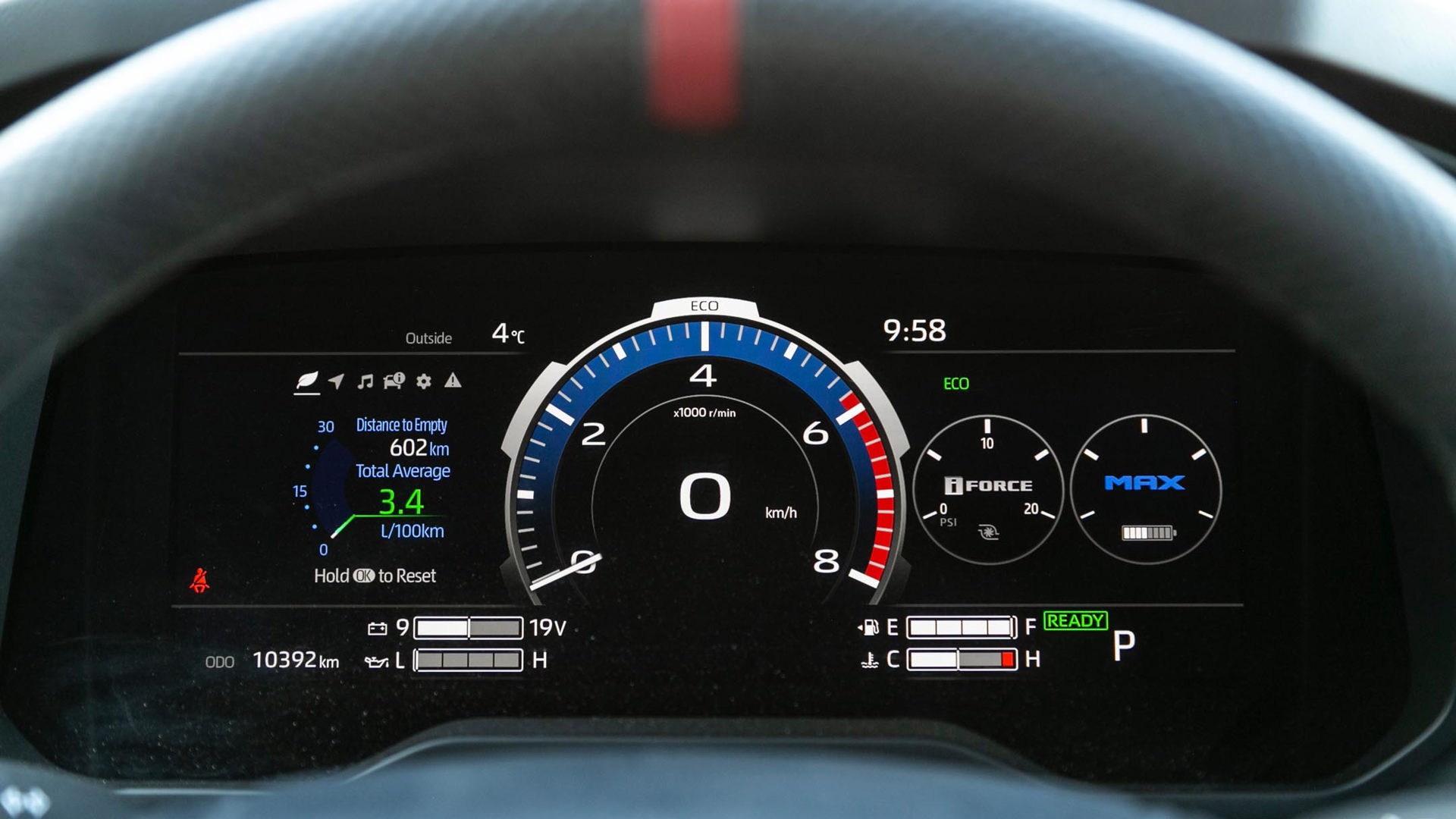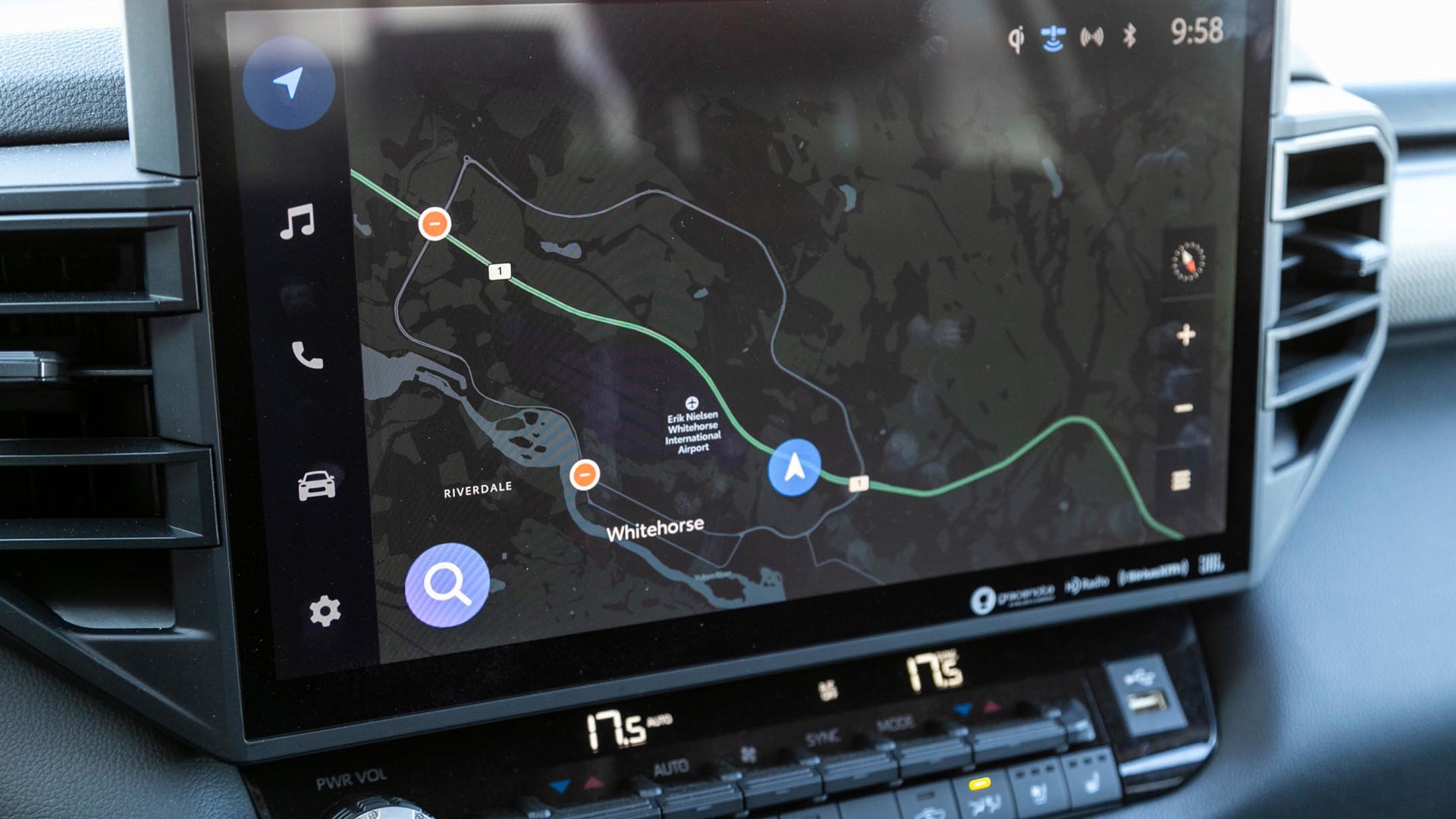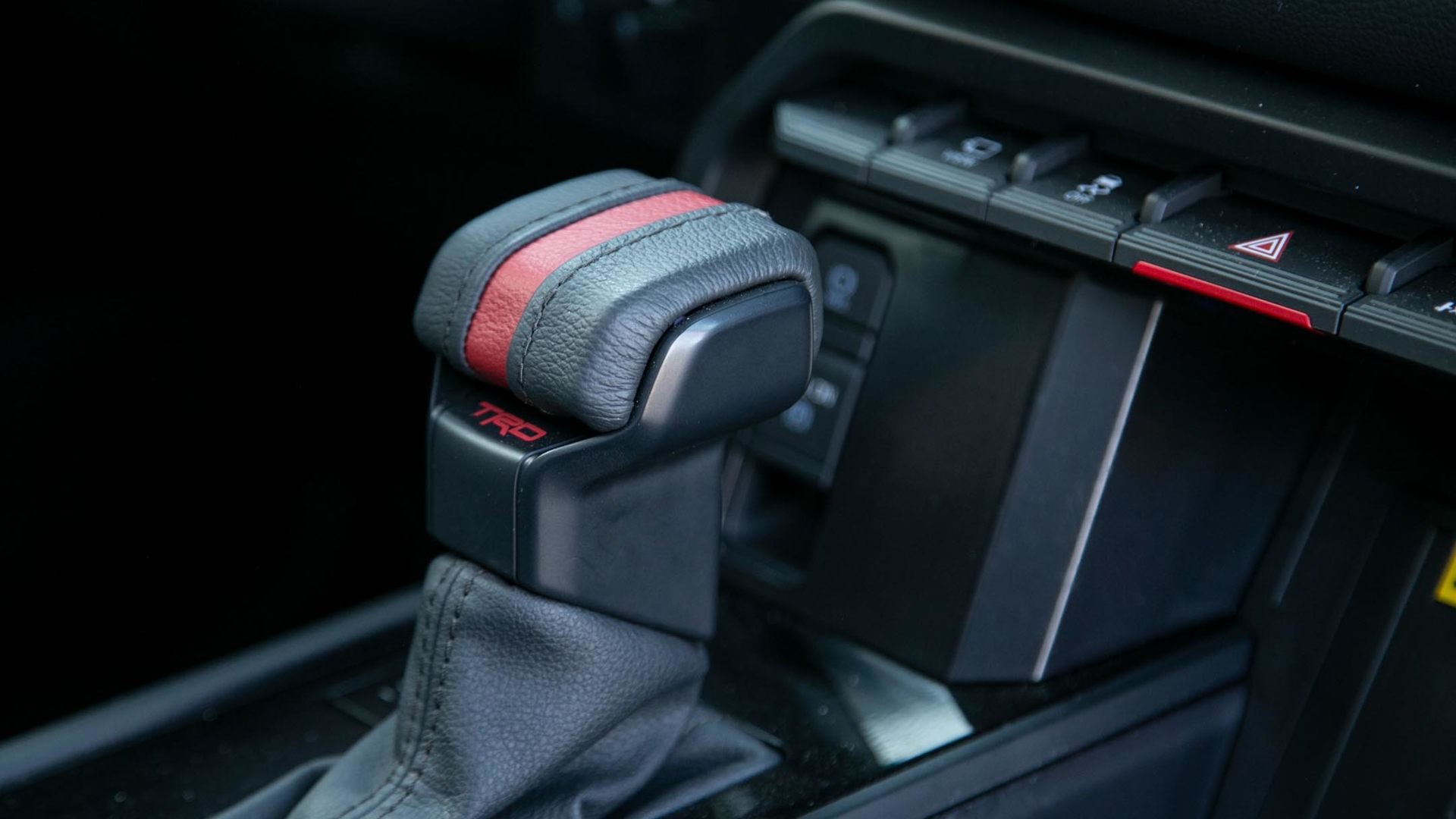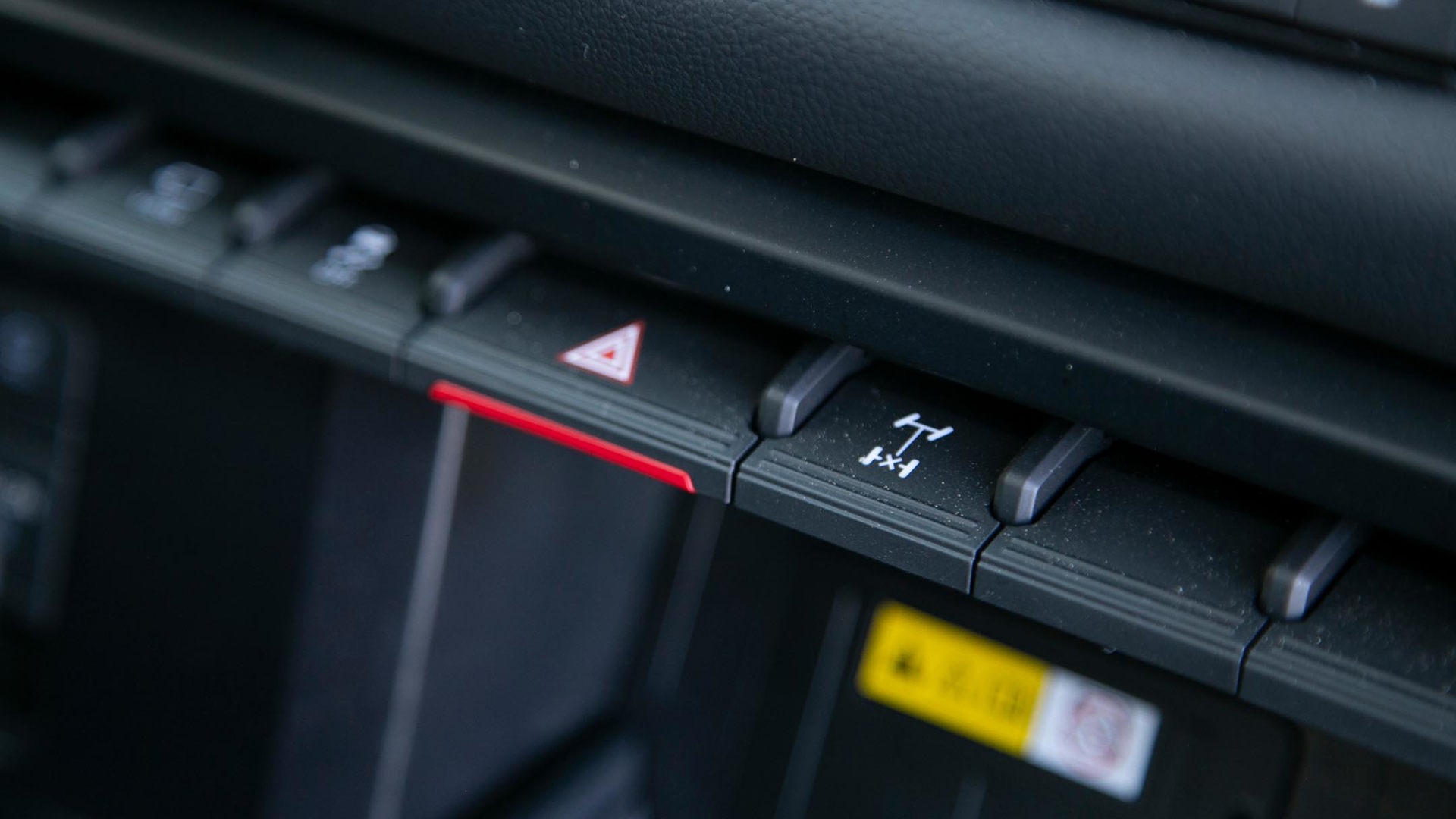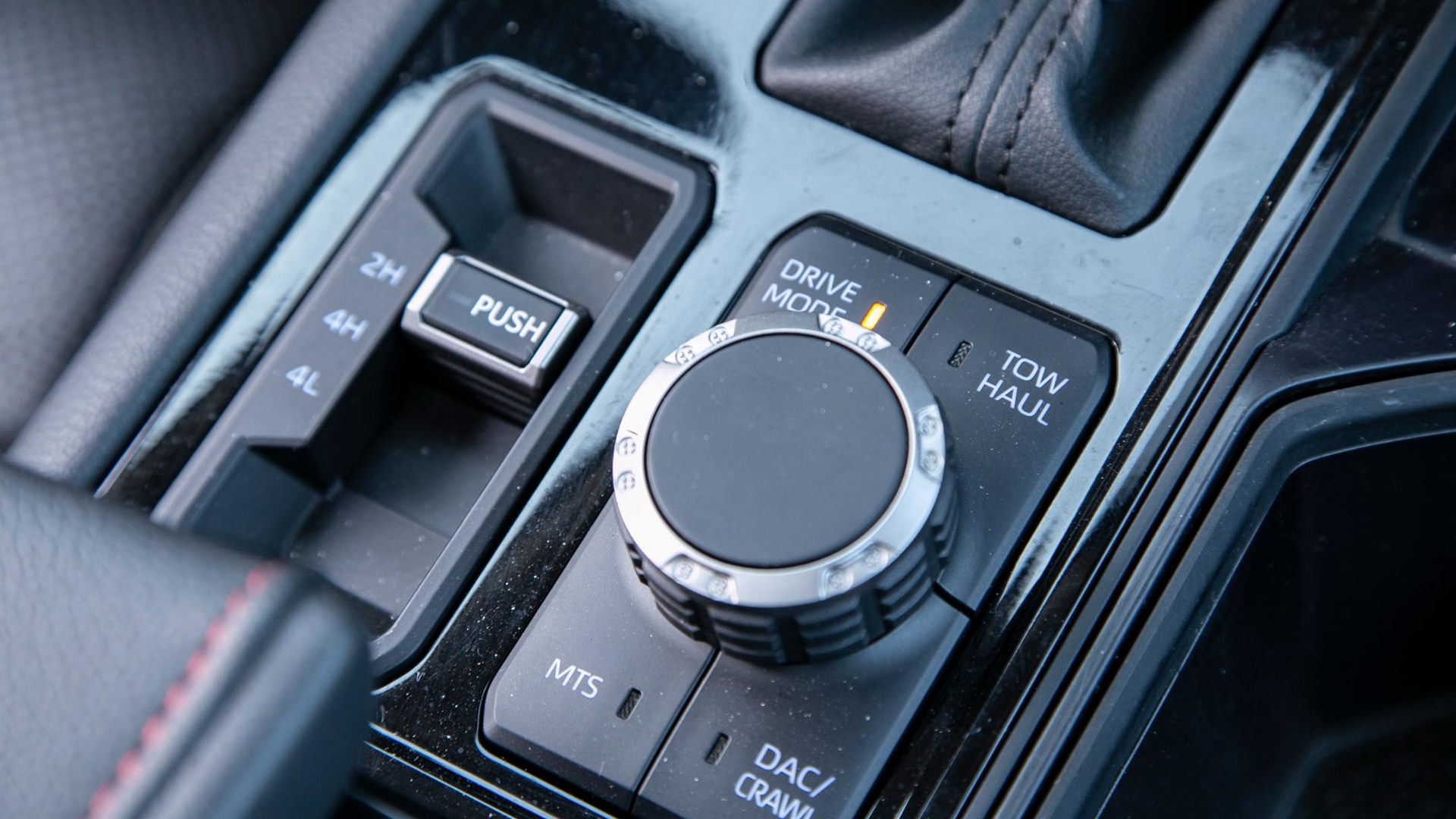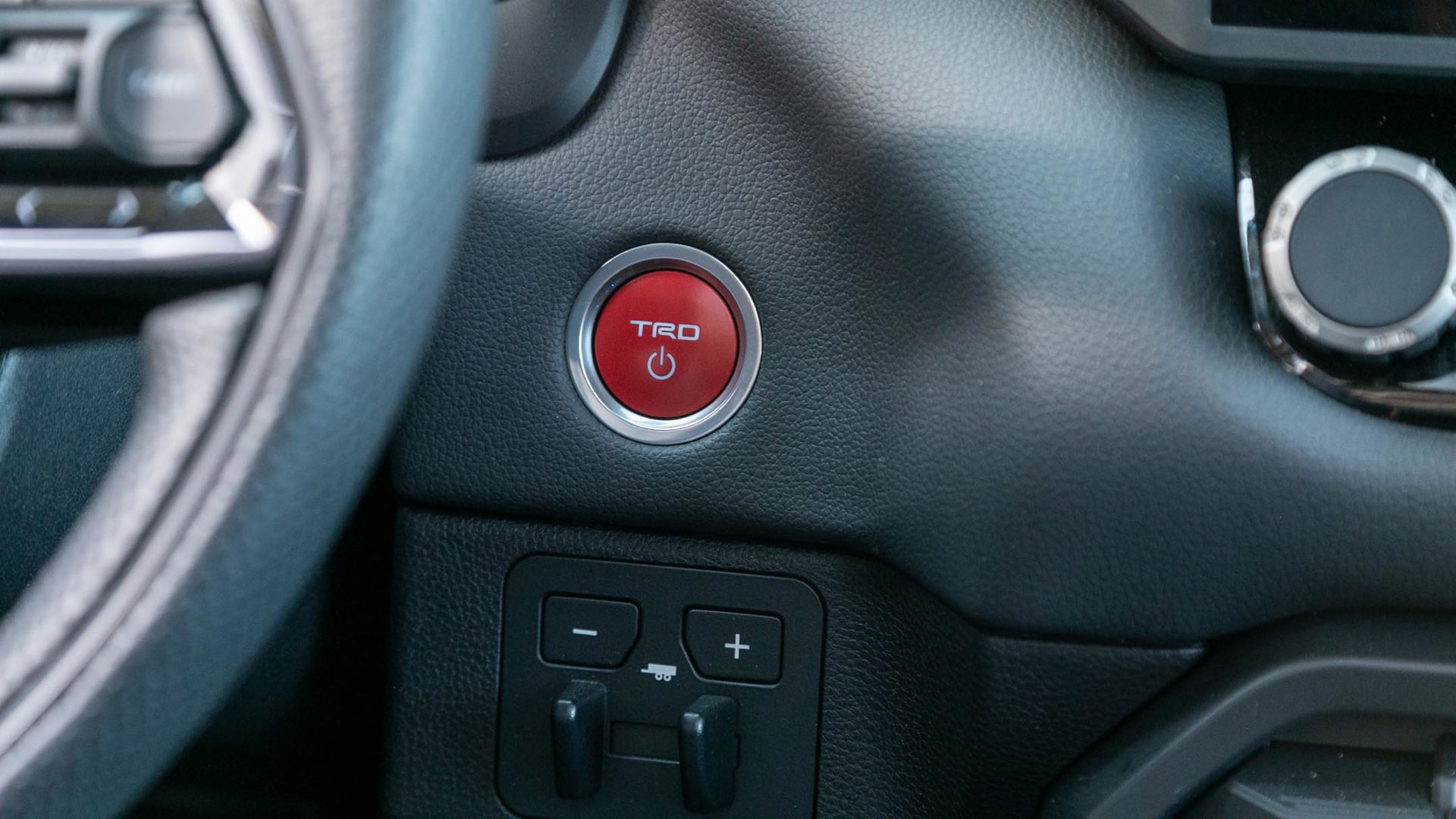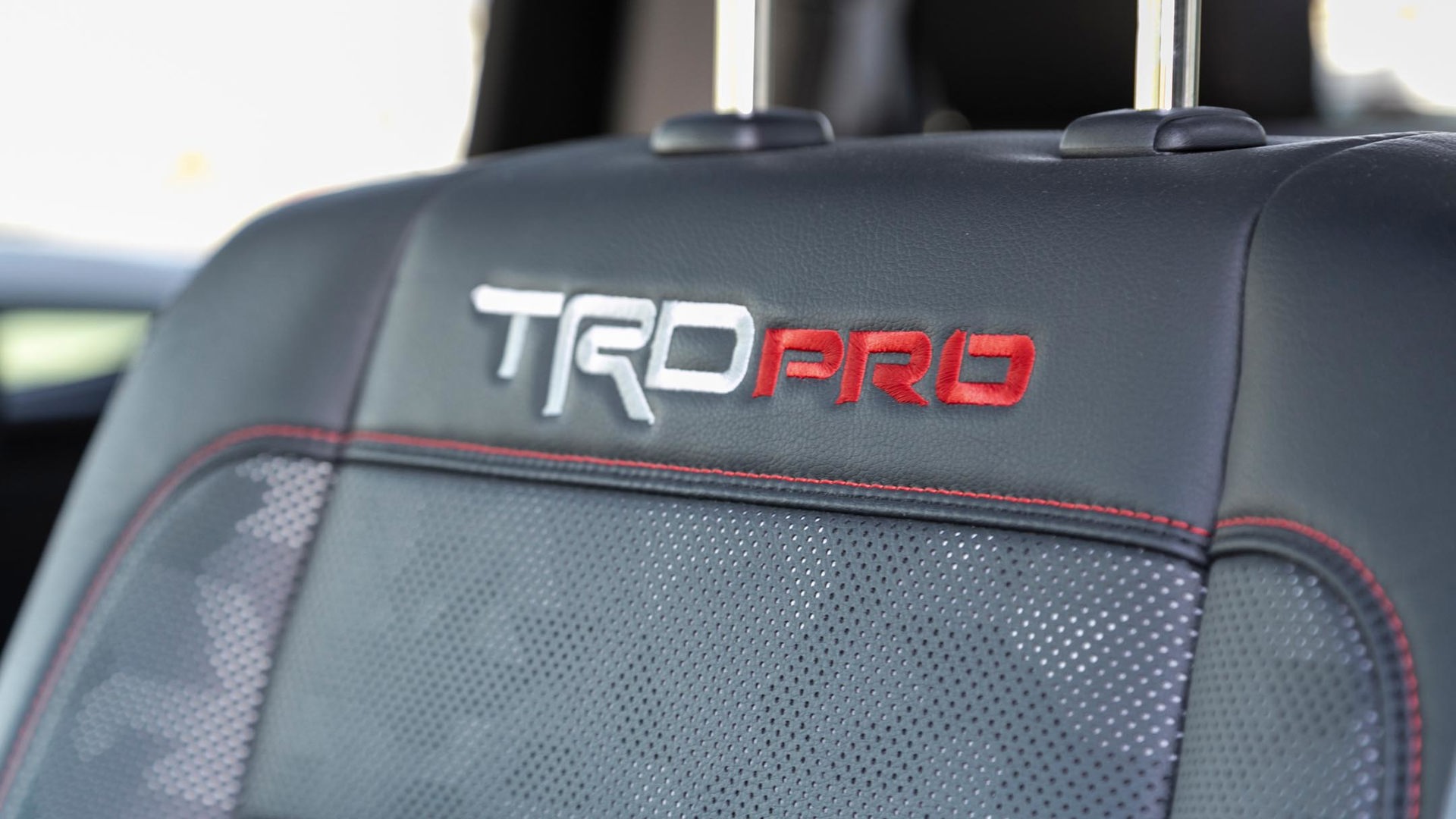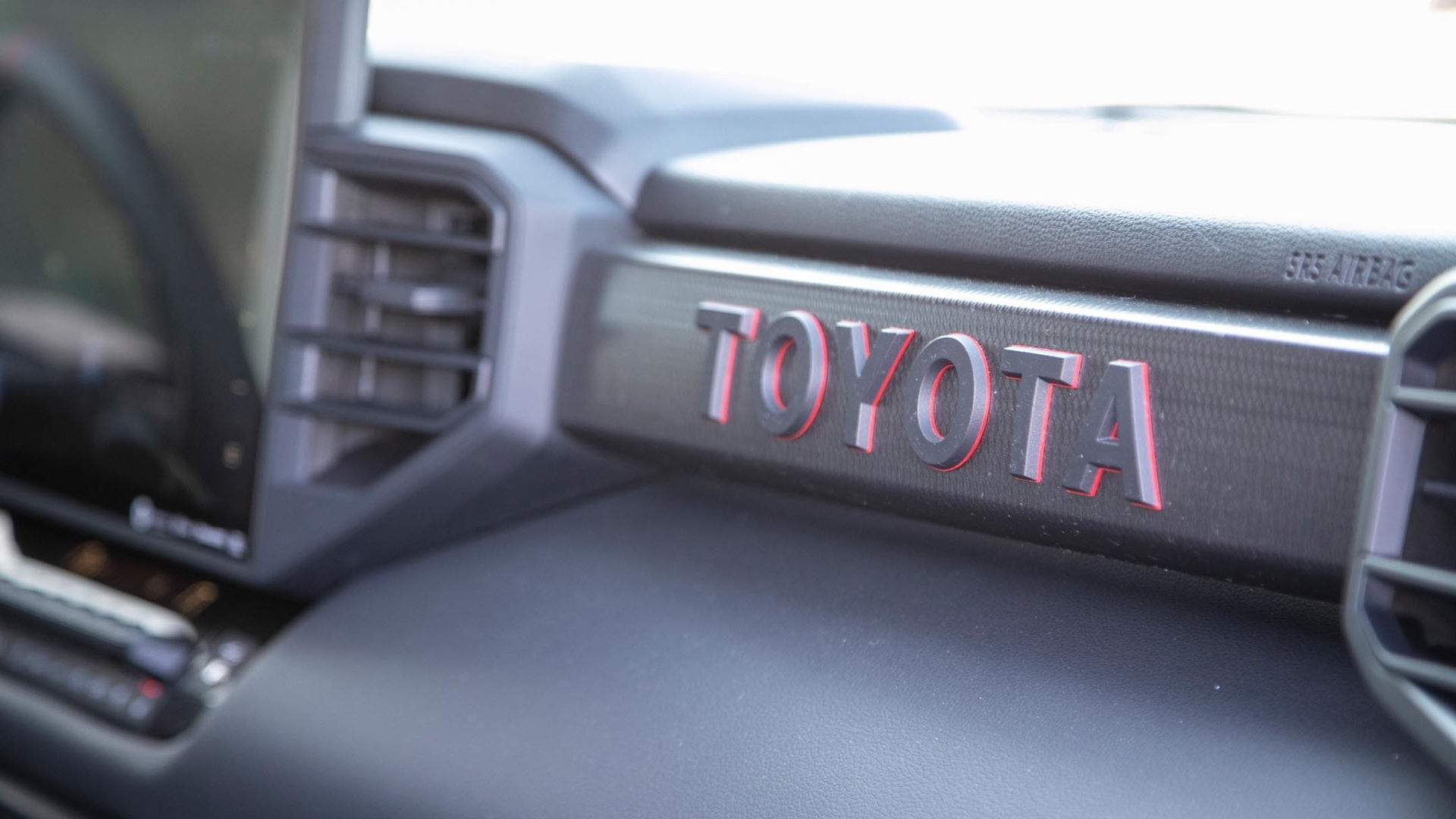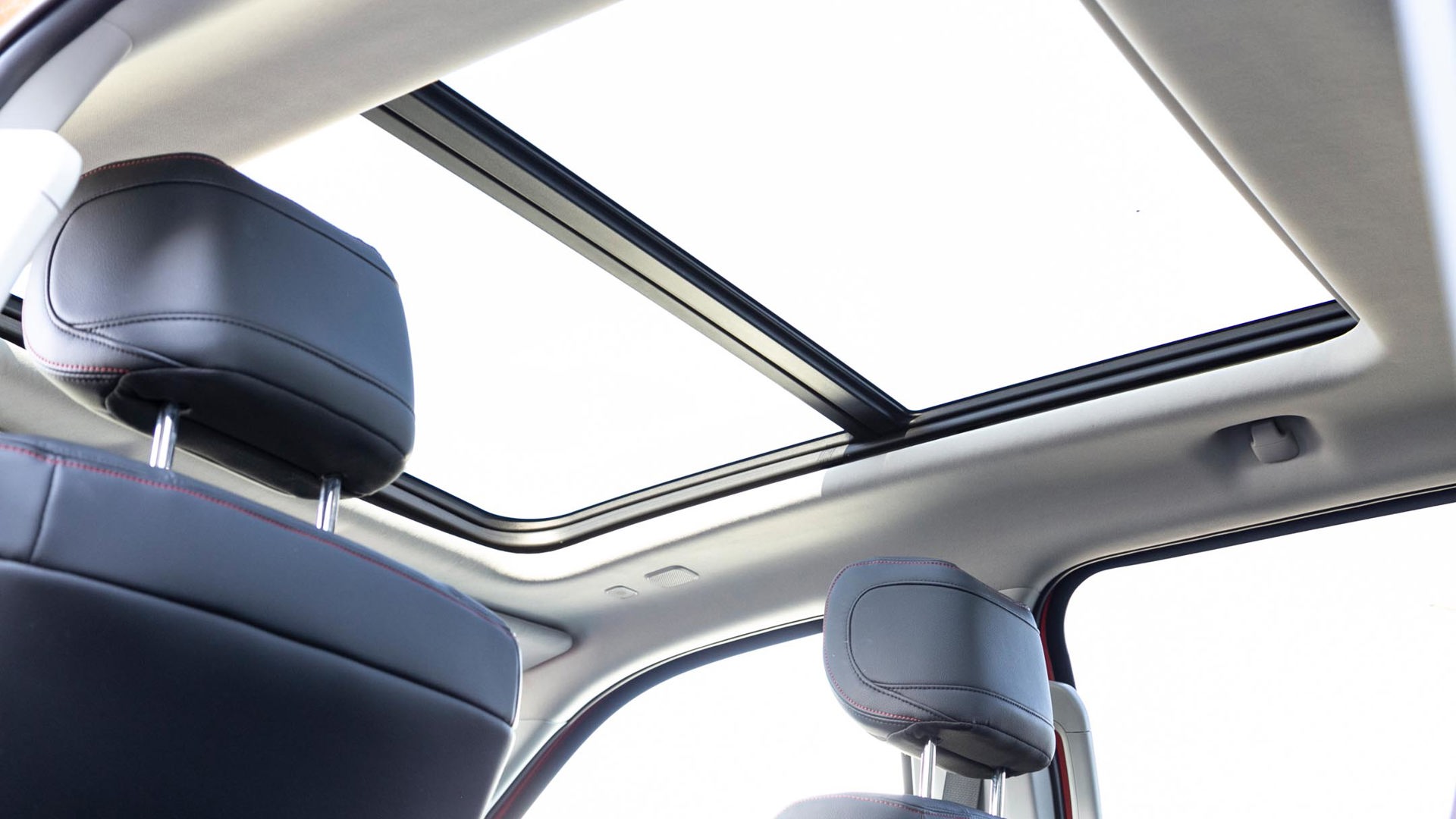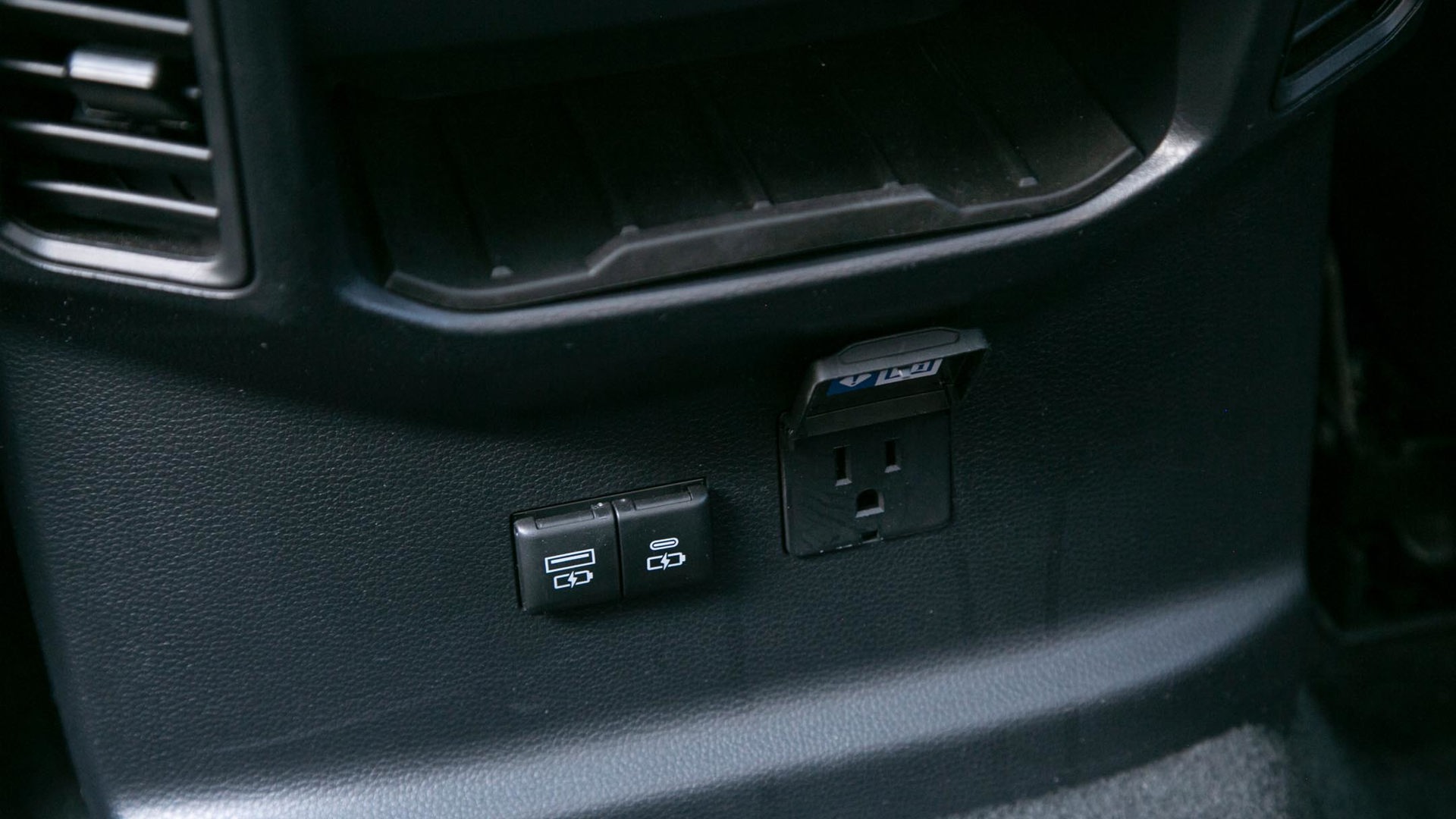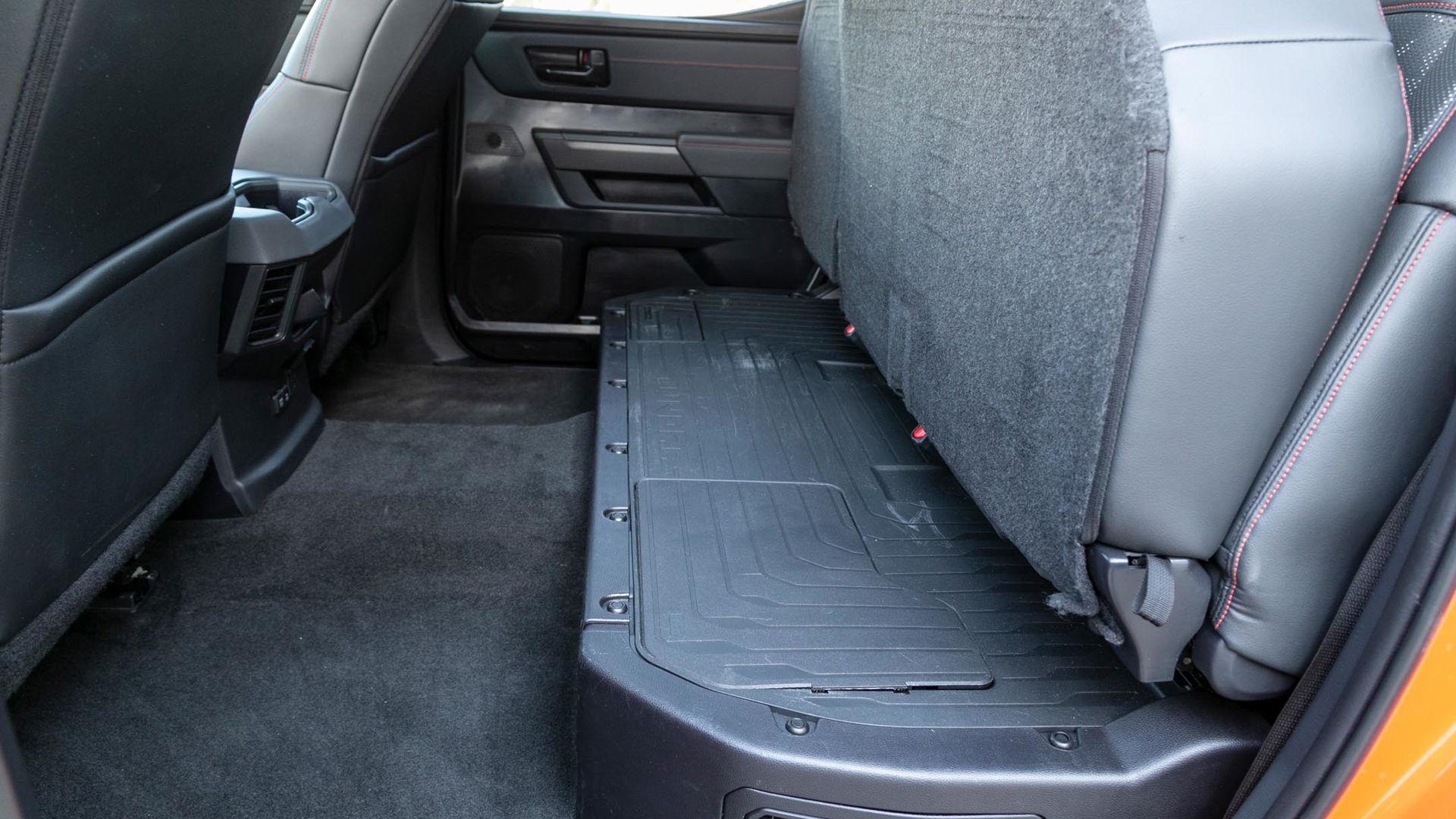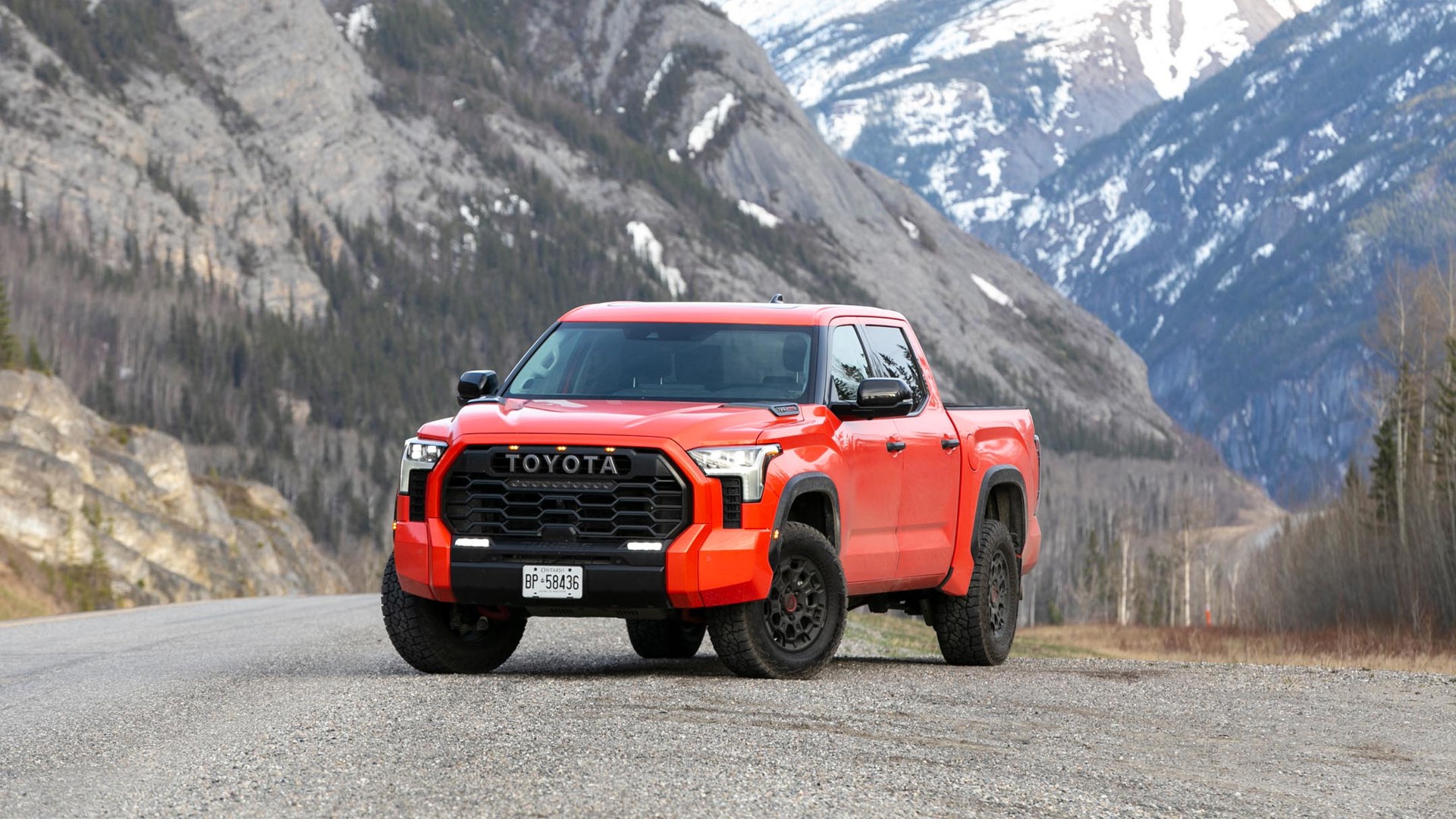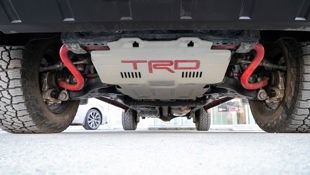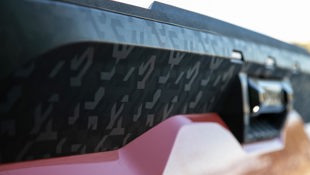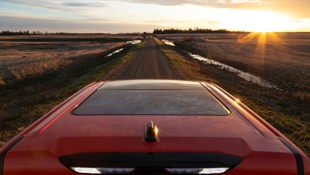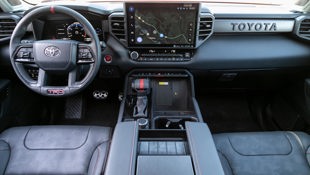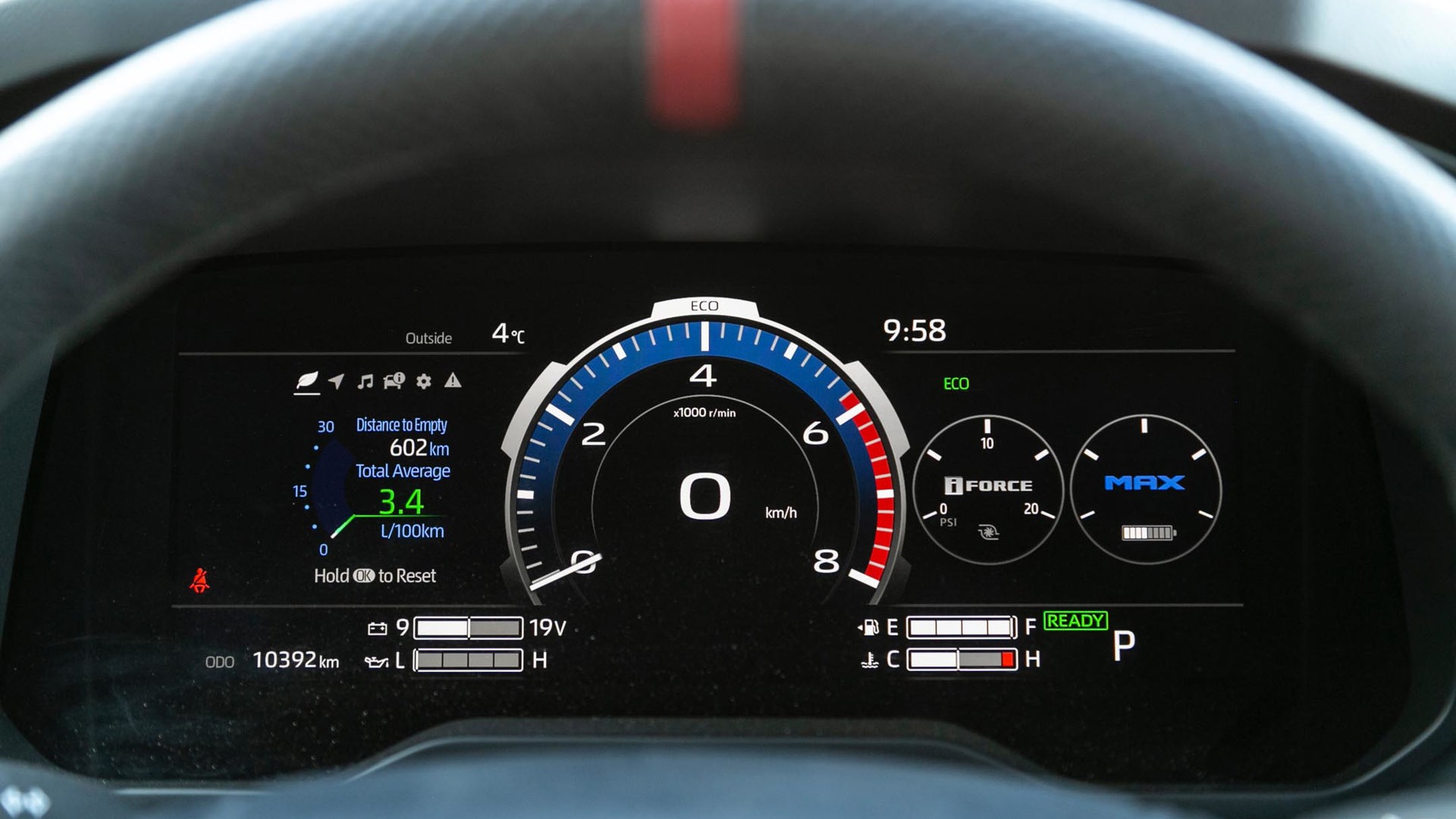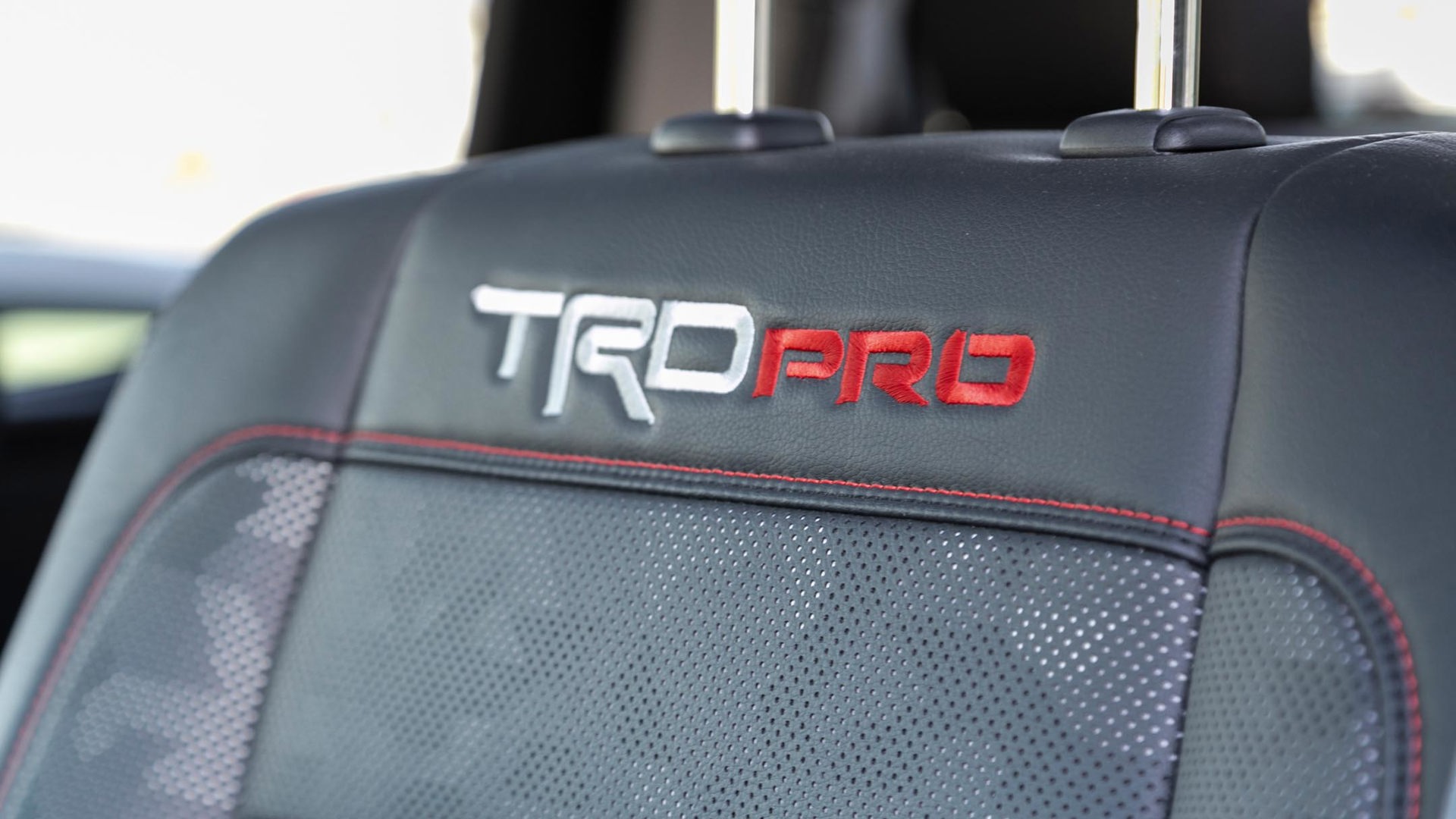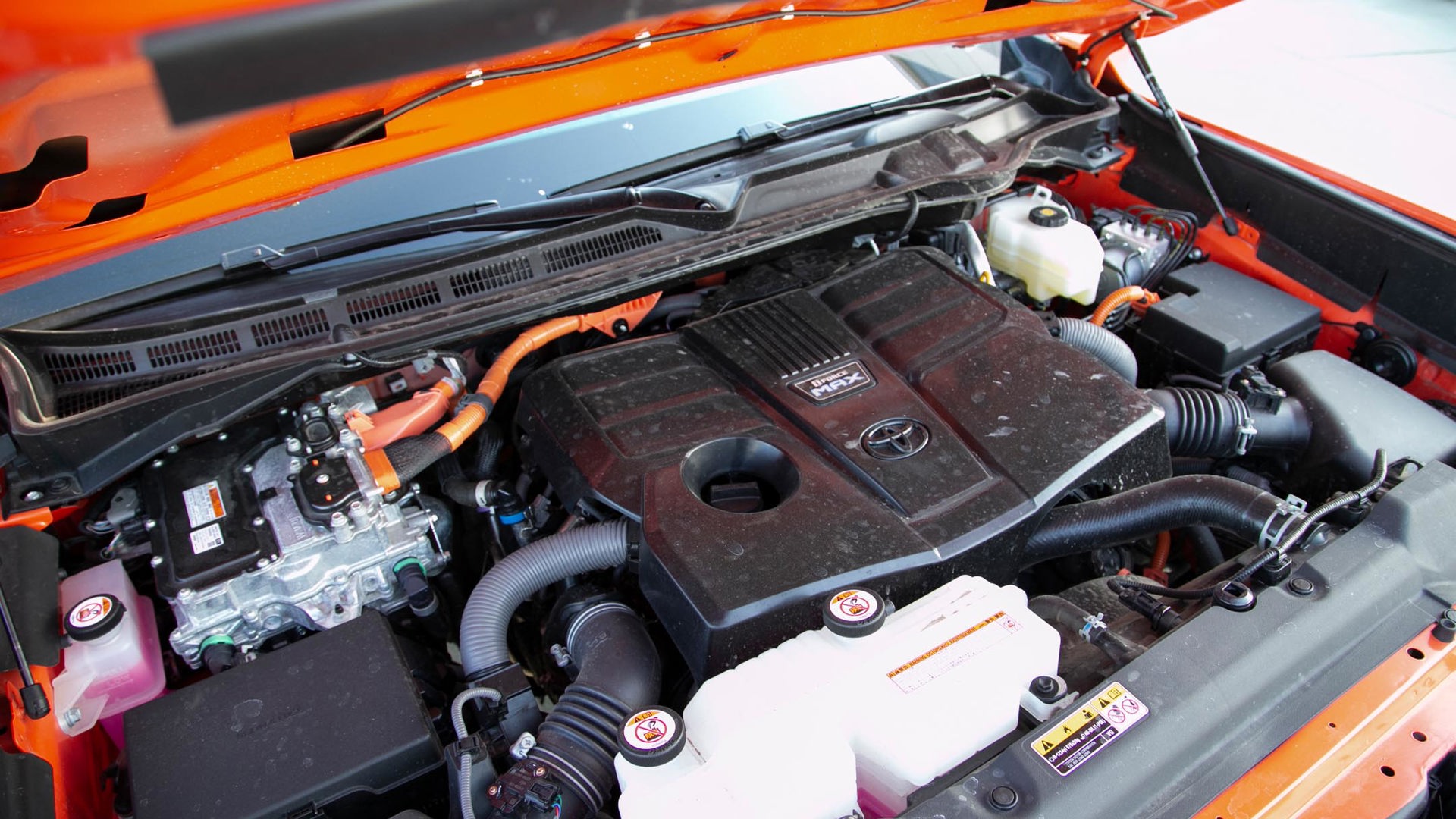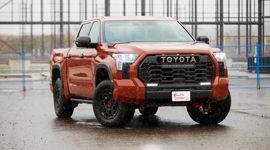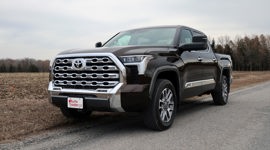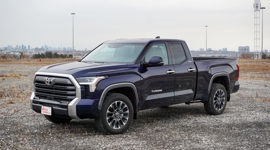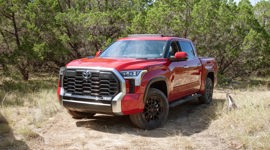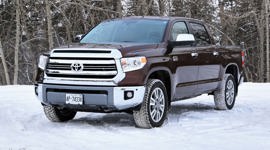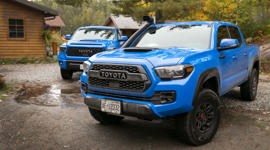 AutoTrader SCORE
AutoTrader SCORE
-
STYLING8/10
-
Safety9/10
-
PRACTICALITY8/10
-
USER-FRIENDLINESS8/10
-
FEATURES8/10
-
POWER9/10
-
COMFORT7/10
-
DRIVING FEEL7/10
-
FUEL ECONOMY6/10
-
VALUE7/10
Occasionally, interesting opportunities are dropped into your lap and you just have to take them.
Such was the case with the 2022 Toyota Tundra – well, two of them, to be exact. Following an excursion to Tuktoyuktuk, N.W.T., Toyota Canada had a pair of these new pickups in Whitehorse, Yukon, that were needed back at the automaker’s Toronto headquarters. Shipping them via flatbed was an option, but one that would’ve cost the company $5,000 per truck, so when Toyota offered to fly me – along with friend and fellow auto writer Derek McNaughton – north to pick the trucks and drive them home, we jumped at the chance.
It was a rare opportunity for an epic road trip through a good chunk of Canada’s spectacular Northern Rockies, made better by the fact that one of the two trucks was a 2022 Toyota Tundra TRD Pro sporting its new hybrid powertrain.
Fuel Economy: 6/10
Most folks (fairly) associate the word hybrid with improved fuel efficiency above all else – especially when Toyota’s involved. In the case of the gas-electric offering in this truck, the i-Force Max moniker doesn’t hint to any sort of economy, but rather suggests abundant power – and that’s just what this system delivers.
The government rates the TRD Pro at 12.9 L/100 km in the city, 11.6 on the highway, and 12.3 combined, which puts it a little more than a half-litre better around town but a full litre worse on the highway than the non-hybrid truck we also had with us. The official combined figures are virtually identical between the two.
Over the course of our journey – with several fuel stops and more than 5,500 km covered – the Tundra TRD Pro was consistently less efficient than the non-hybrid SR5 trim by 2.0 L/100 km during the earlier part of the trip (when we were travelling at higher speeds), and by roughly 1.0 L/100 km on the latter half in more congested areas.
If our journey had included more stop-and-go traffic, or urban driving, the electrified Tundra would’ve likely squeaked out slightly better efficiency, but its inefficient all-terrain tires and notably greater mass worked against it on the largely highway trip.
Hybrid Tundras without the meaty rubber offer notably better highway efficiency, but even still, Ford fans will be quick to point out that the hybrid powertrain available with the F-150 delivers greater efficiency across the board, while a diesel-fired Ram 1500 is even more frugal.
Power: 9.5/10
I started out the first drive day getting familiar with the Tundra SR5 – a crew cab variant with a longer 6-foot-5 box. I’ve long celebrated Toyota sticking with a big, old-school V8 for the previous-generation Tundra, an engine that, while hopelessly thirsty, was stout and full of vocal character. I was a little saddened by the inevitable move to a more efficient twin-turbocharged V6 in the new truck, but I quickly got over it the first time I put my foot down hard on the accelerator, the Tundra leaping forward from a standstill with authority.
At 389 hp and 479 lb-ft of torque, the new V6 outperforms the old V8 by a decent margin in twist, but the hybrid system throws down 437 hp and a 583 lb-ft wallop of torque (topping the F-150’s hybrid, for those keeping score). Hauling more than 235 kg (518 lb) of extra mass, including the 57-kg (126-lb) battery pack, the hybrid truck’s greater power has a bigger burden to bear, and from a standstill up to about 100 km/h there is no difference in acceleration. Once up to speed, though, the hybrid’s mid- and upper-range power advantage is very noticeable over the non-hybrid truck, especially when passing slower traffic.
In both trucks, under a heavy boot, the V6 sounds authoritative and there’s even a bit of turbo whistle present (even if some of the soundtrack is fabricated digitally). Maybe there really is no need to shed a tear for the V8 after all.
The Tundra’s new 10-speed automatic transmission is brilliant. Typically, gearboxes with so many cogs tend to feel like they’re constantly hunting for the right ratio, but no so this one. Shifts are smooth and seamless, but quick and decisive, and the Tundra never seems to be caught off-guard when a call comes in for immediate acceleration. The combination of this transmission and the torquey engine makes the big Toyota feel wonderfully responsive at all speeds.
Driving Feel: 7.5/10
Full-size trucks are always a compromise in the driving-feel department, with manufacturers trading ride quality and handling for the ruggedness, durability and hauling capability or off-road prowess. The Tundra is a tall and heavy machine and its handling doesn’t let you forget that. Steering effort is minimized thanks to the electric boost, but at parking lot speeds the Tundra’s enormous turning circle – even with the TRD Pro’s shorter length – had me underestimating the amount of acreage needed to park in tight spots. Still, at speed – and by pickup standards – the Tundra is decently composed, and the brakes are strong enough to haul it down to a stop, a trait we tested several times thanks to the waywardly wandering wildlife that’s so prolific along the Alaska Highway.
Switching between the SR5 fitted with the TRD Off Road package that includes monotube Bilstein shocks, and the TRD Pro with its 2.5-inch Fox shocks (and 28-mm lift) showcased the differences in on-road personality between the two rigs. The SR5, with its highway-friendly tires and longer wheelbase, was appreciably smoother when cruising.
The TRD Pro versions of the 4Runner and Tacoma offer an amazing balance between sophisticated ride management and the ability to stay pointed straight, even when driving aggressively over rough terrain. The new Tundra TRD Pro’s ride is surprisingly firm, and while the big Falken Wildpeak tires soften the blow of most smaller road imperfections, bigger potholes resonate through the cabin more than expected.
We didn’t have time to explore all the endless trails the region offered, but we did take advantage of a few rough access roads to put the trucks’ suspensions to the test and found that even when bounding over rough terrain at moderate speed, the TRD Pro couldn’t be upset.
Practicality: 8/10
The Tundra, like its Big Three competitors, can be configured in a dizzying number of lengths and variations with box length ranging from 5-foot-5 to eight feet. The TRD Pro is only available in a crew cab configuration with a short box, which is typical of these off-road rigs, while its payload tops out at 730 kg (1,609 lb) – slightly less than the SR5 with the longer box at 780 kg (1,720 lb). The box itself is made out of composite materials and strengthened with aluminum, which should make it very durable and eliminate the need for additional costly bedliners.
All Tundras, save for the base SR model with their lower power outputs, are rated to tow at least 4,990 kg (11,000 lb), and a trailer brake controller is standard across the lineup. The cabin offers plenty of storage for the typical items one might need on a 5,500-km road trip (lots of snacks), but the storage cubbies beneath the rear seat have been partially occupied by components needed for the hybrid system.
And while Ford has done a great job of integrating some properly powerful generators into the beds of many of its trucks, with the hybrid version (and all-electric Lightning) rated for serious power, the TRD Pro has only a regular household outlet in the bed, and our SR5 truck didn’t even offer that.
Features: 8/10
The TRD Pro also gets a set of adjustable tie-down cleats, and a clever release for the damped tailgate hidden in the driver’s side taillight, but no cut-out in the bumper or clever pop-out step to help climb into the box that most of the competitors trucks have.
Based on the Limited trim, the TRD Pro is already a well-equipped machine with plenty of creature comforts like a heated steering wheel, heated and cooled front seats, and heated rear seats, plus a giant sunroof.
Both the TRD Off Road and TRD Pro trucks get surround-view camera systems that can be useful for off-road crawling when a spotter’s not available. Engine, fuel tank, and transfer case armour, hill descent and crawl control, and a locking rear differential are added, too. The TRD Pro gets gnarly Fox shocks and a special front stabilizer bar in addition to its styling upgrades.
Comfort: 7.5/10
While ride comfort is rarely impressive for any machine meant to work as hard as a pick-up truck can do, off-road suspensions usually offer some pleasant cushiness on-road (at the expense of handling precision). The TRD Pro is stiffer than expected, but still not harsh. What’s more, the Tundra’s seats are quite good, and while AutoTrader Road Test Editor Dan Ilika found some discomfort after a few hours in the saddle during his recent test, both Derek and I remarked at how good we both felt even after a few 12-hour drive days.
User Friendliness: 8.5/10
Ergonomically, the TRD Pro is very well done. In typical Toyota truck fashion, the switches are all sensibly laid out, and – except for the absence of radio tuning knob – easy to use. The Pro receives a slick-looking digital gauge display, bumpin’ 12-speaker sound system (which isn’t really that much better than the base system), and an upgraded infotainment system with its massive 14-inch touch screen and wireless CarPlay and Android Auto connectivity. We found switching drivers (and phones) regularly caused a lot of system confusion, and I got into the habit of plugging in via the USB cable instead of connecting wirelessly. Also of note, the base system and its eight-inch screen in the SR5 truck worked well, too, but its tiny volume knob is tricky to grab with gloved hands.
The infotainment system’s “Hey, Toyota” voice interaction and onboard navigation are both web-based, and for at least a thousand kilometres of our trip, we were out of cellular range, rendering those systems largely useless. Instead, we’d set our Google Maps on our phones at the start of the day and use CarPlay instead, which worked just fine.
The driving position is commanding with excellent sightlines all around the truck.
Safety: 9/10
Toyota has done a good job of loading up the Tundra with passive and active safety features. The automatic high-beam control for the LED headlights is standard across the board, but the TRD Pro gets fancier adaptive lights. There’s also forward and rear collision warning and mitigation systems, plus cross-traffic alert and blind-spot monitoring.
Going through a few squalls in the mountains, the adaptive cruise control and forward collision warning systems became disabled when the sensor got jammed with snow, but that’s typical of any vehicle these days. More concerning was the warning message I received a few times about the trailer I was towing (I wasn’t towing a trailer), but these were pre-production units, so maybe there are still some programming bugs being worked out.
The lane-departure intervention can be quite aggressive at times, even when switched to the lesser of the two settings, but holding the button down for several seconds will shut it down and let the driver have full control.
Styling: 8/10
The TRD Pro receives a host of unique styling elements, including a tailgate stamped with “TRD PRO,” and a merciful improvement to the front end. While all Tundras get the enormous gaping maw of a grille, the Pro ditches the Limited’s giant chrome moustache and gets the cool retro “TOYOTA” wordmark across the centre, below which is a blazing LED auxiliary light bar.
The hood gets a pair of epaulette TRD Pro badges and the digital-camo fender flares extend just wide enough to warrant clearance lights (like the Ford F-150 Raptor and Ram 1500 TRX). The beefy all-terrain tires wrap around some very nice forged BBS wheels, and when finished in the retina-searing orange of our test truck, it’s a pretty arresting site.
Repeatedly, the TRD Pro received positive comments from other pickup drivers as we crossed the truck havens of northern British Columbia and Alberta, while the more subdued SR5 was mostly ignored.
The interior gets a similar macho treatment, with the Toyota wordmark again repeated on the passenger side dashboard, and the faux leather seats receiving a subtle digital-camo motif, red stitching, and bold TRD Pro badges.
It’s by far the most aggressive-looking Tundra, but it still looks like a truck playing dress-up compared to the truly butch TRX and Raptor.
Value: 7.5/10
In an age when full-size pick-ups can routinely crest the six-figure barrier, a Tundra fitted with forged wheels, high-end shocks, and all the exterior and interior features of this TRD Pro seems like a pretty good value at $80,000. Those looking for even more luxury can opt for the new range-topping Capstone edition. But with the TRD Off Road package ringing in $11,000 less than the TRD Pro, it forces the buyer to evaluate just how much the TRD Pro’s appearance and fancy shocks are really worth.
The Verdict
Having the chance to log so much seat time with two Tundras was a revealing experience. Toyota’s new full-size pickup is an excellent offering, but with negligible efficiency benefits of the hybrid system and performance that’s largely off-set by the considerable weight penalty, the costly TRD Pro package will likely appeal to a small contingent of buyers. Those without the need for the most badass Tundra would do well to consider a non-hybrid Limited with the TRD Off Road package and pocket $15,000 in savings.
| Engine Displacement | 3.5L |
|---|---|
| Engine Cylinders | Turbo V6 |
| Peak Horsepower | 437 hp |
| Peak Torque | 583 lb-ft |
| Fuel Economy | 583 lb-ft 12.9 / 11.6 / 12.3 L/100 km cty/hwy/cmb |
| Cargo Space | 1,677-mm (66-in) cargo bed |
| Model Tested | 2022 Toyota Tundra Hybrid Crew Cab TRD Pro |
| Base Price | $80,550 |
| A/C Tax | $100 |
| Destination Fee | $1,890 |
| Price as Tested | $82,795 |
|
Optional Equipment
$255 – Solar Octane paint, $255
|
|
